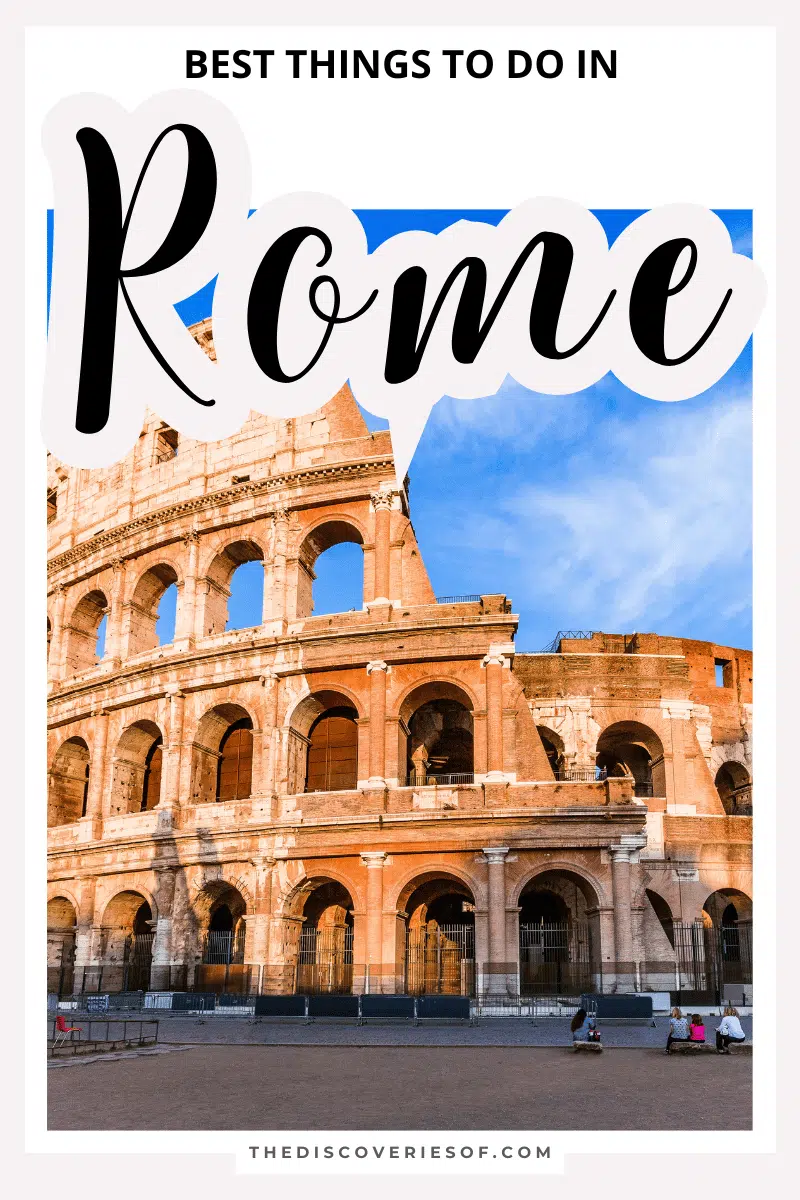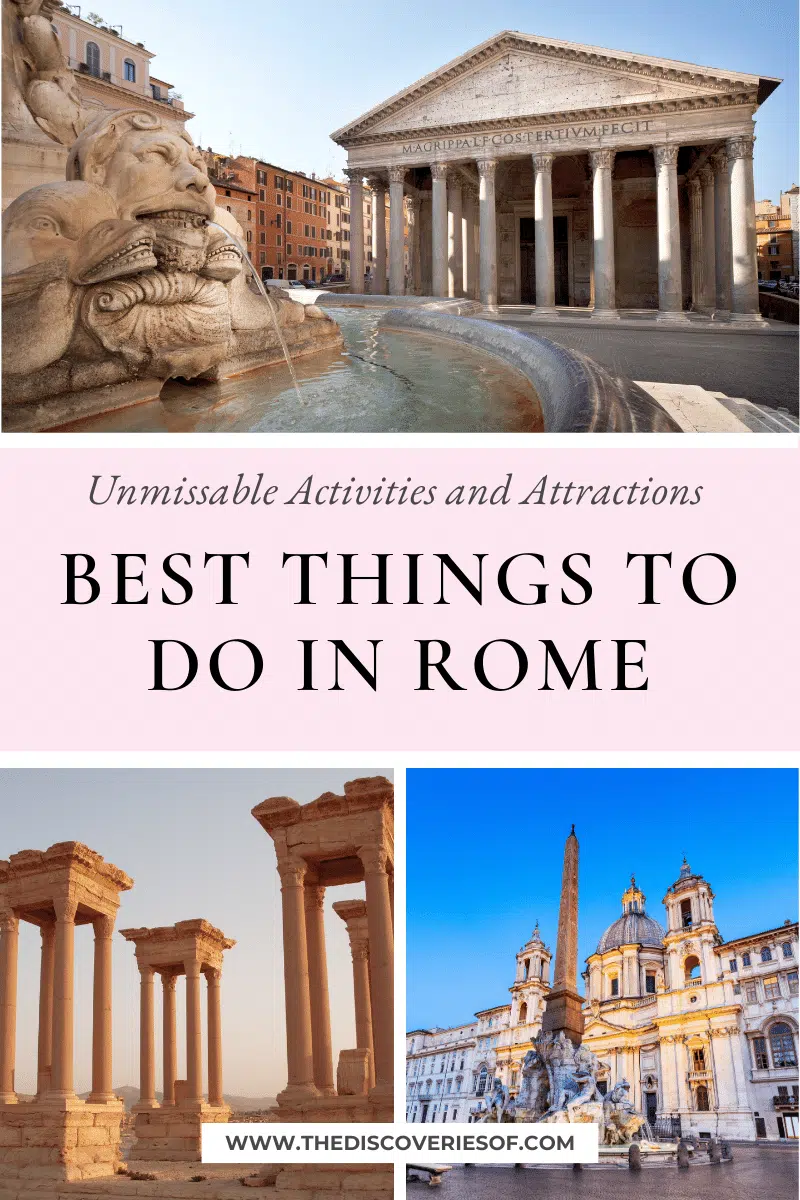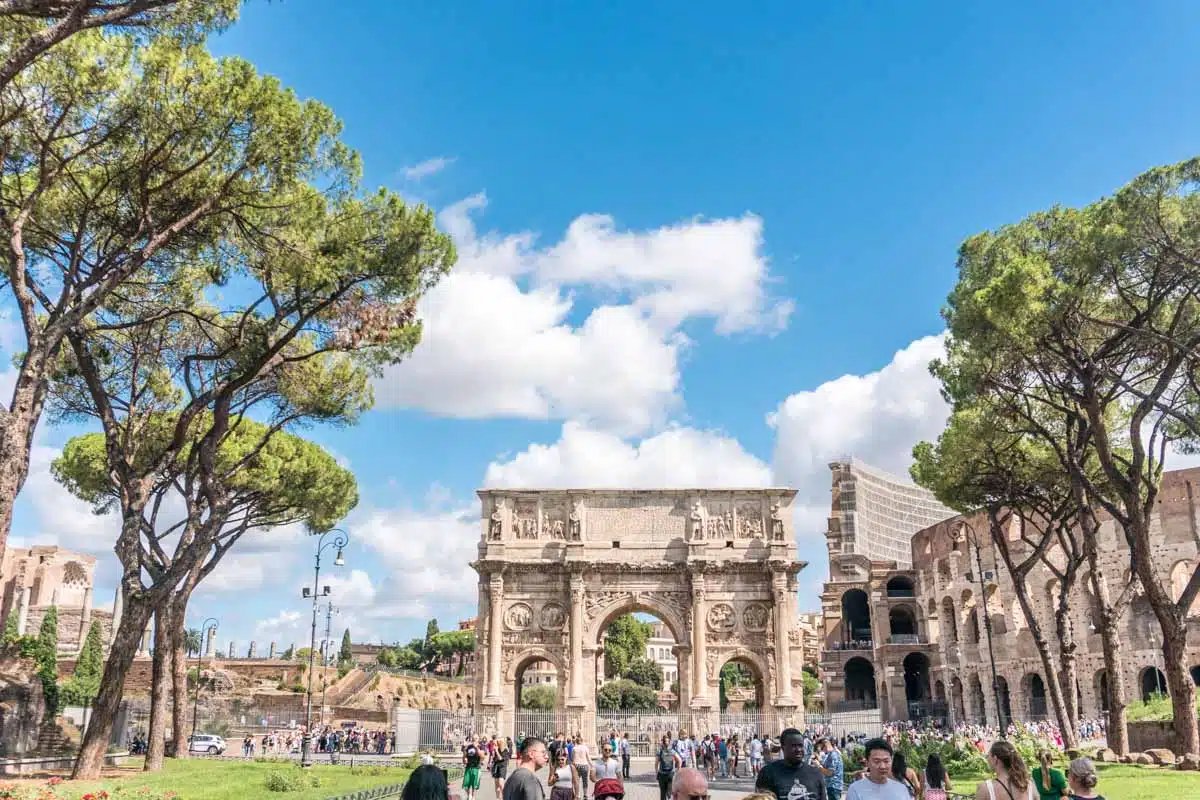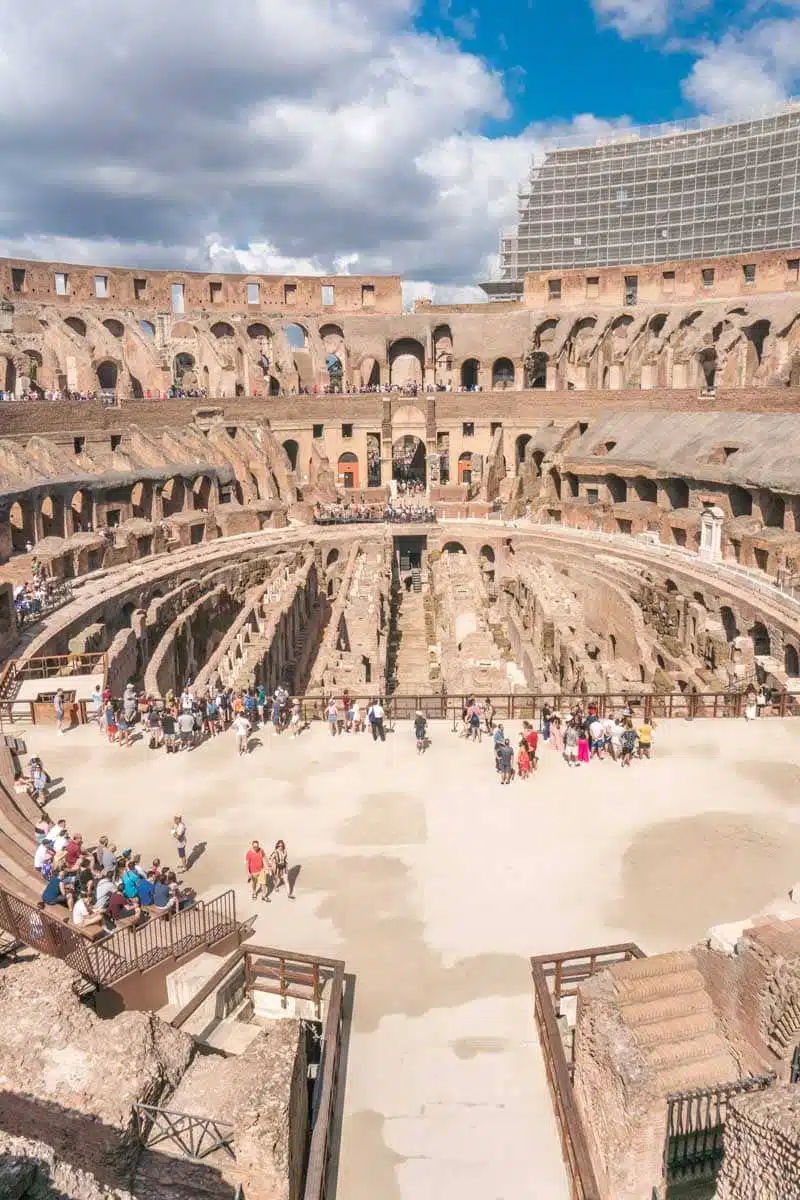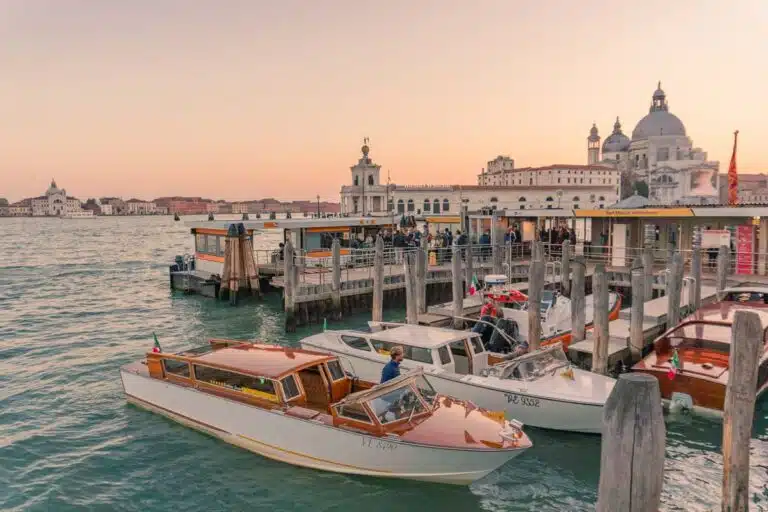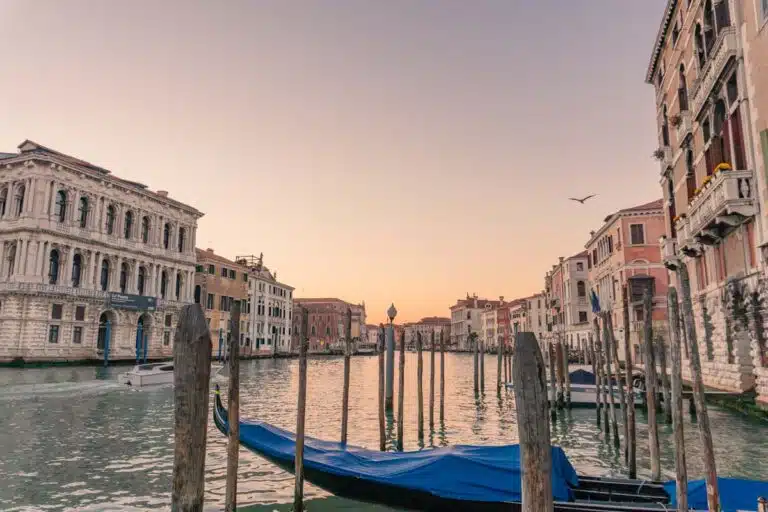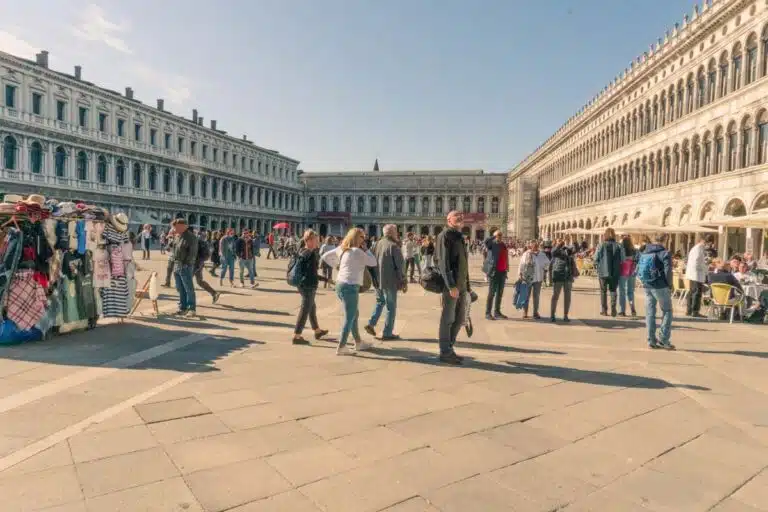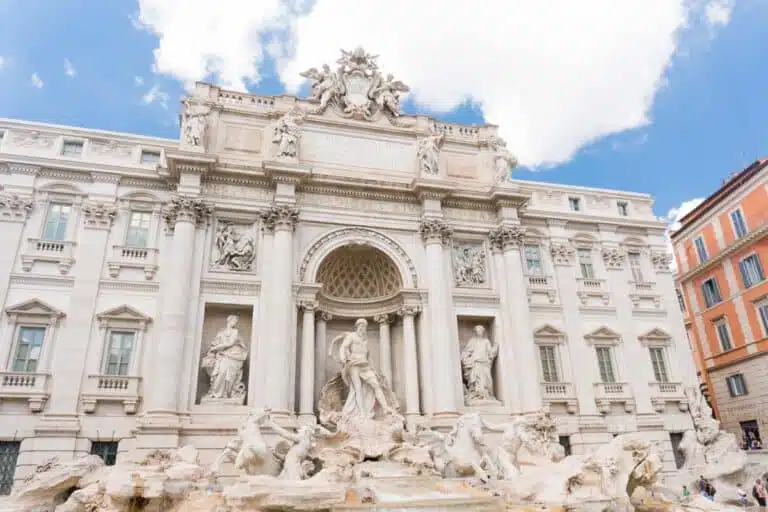Ready to discover the best things to do in Rome? From the iconic Colosseum to lesser-known gems tucked away on the backstreets of the Eternal City, these are the places you shouldn’t miss.
I just got back from another incredible trip to Rome and, while I’m currently in a carb coma (not complaining), it was a trip that reminded me how special this city truly is. A city in which history is frozen in time. They don’t call it the Eternal City for nothing you know.
Yes, Rome is filled with tourists, and yes, it’s expensive AF. But lordy it’s beautiful.
From walking through the ruins of the Roman Forum to gazing in silent wonder at the ceiling of the Sistine Chapel, the city is packed with an unlimited supply of historical buildings and fascinating tales.
So pack your comfiest walking shoes (seriously, you’ll need them) and get ready for an action-packed trip to Rome. Let’s go.
Best Things to Do in Rome
Tour the Iconic Colosseum
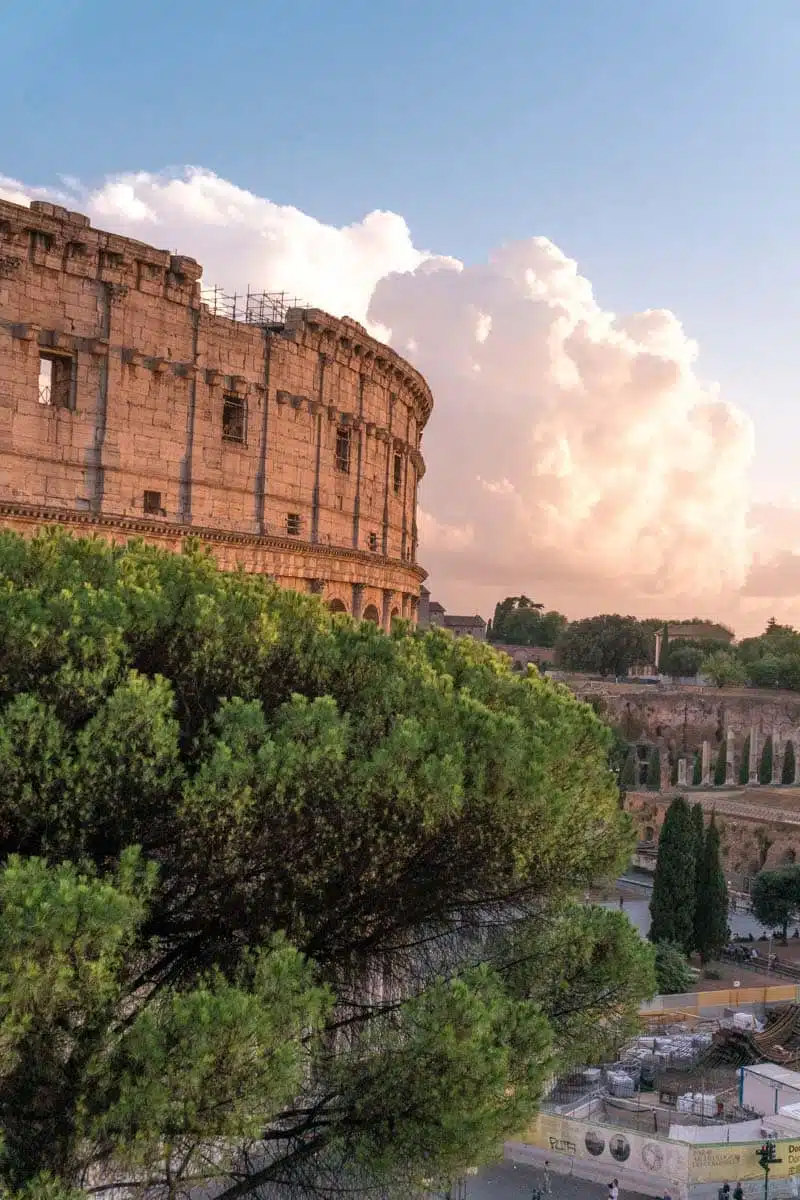
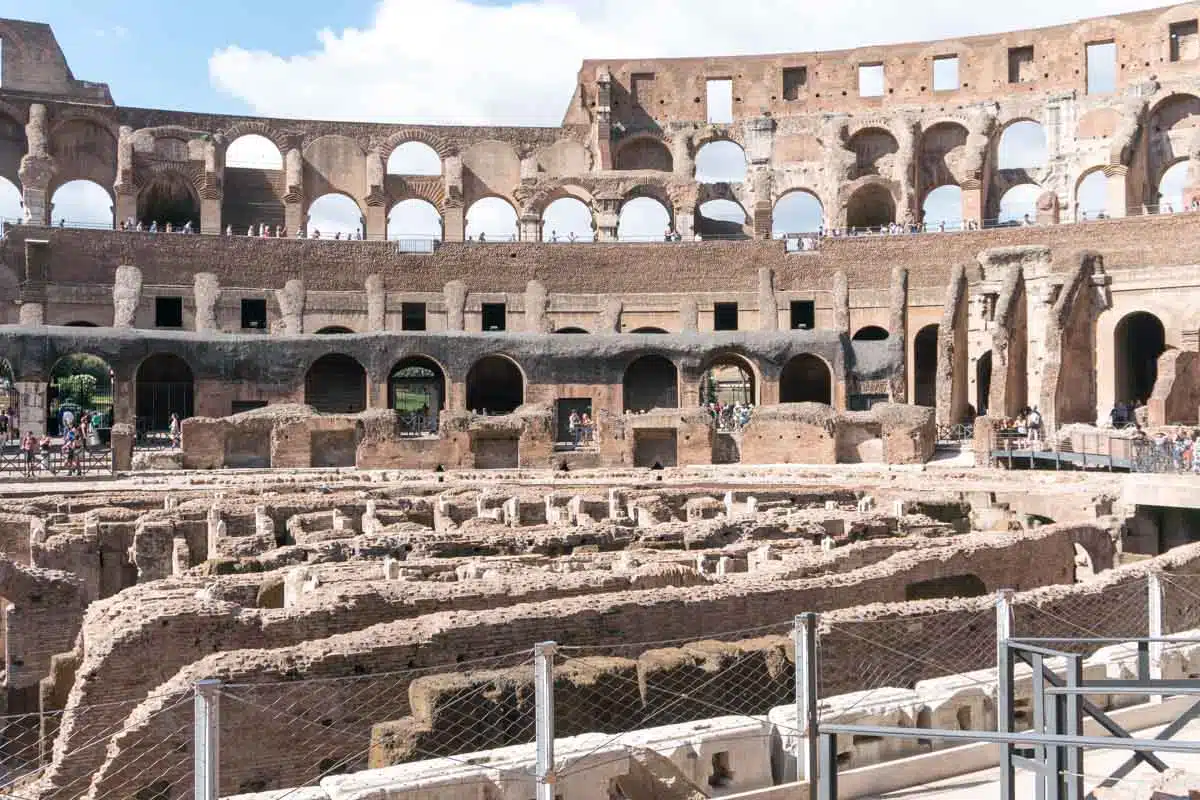
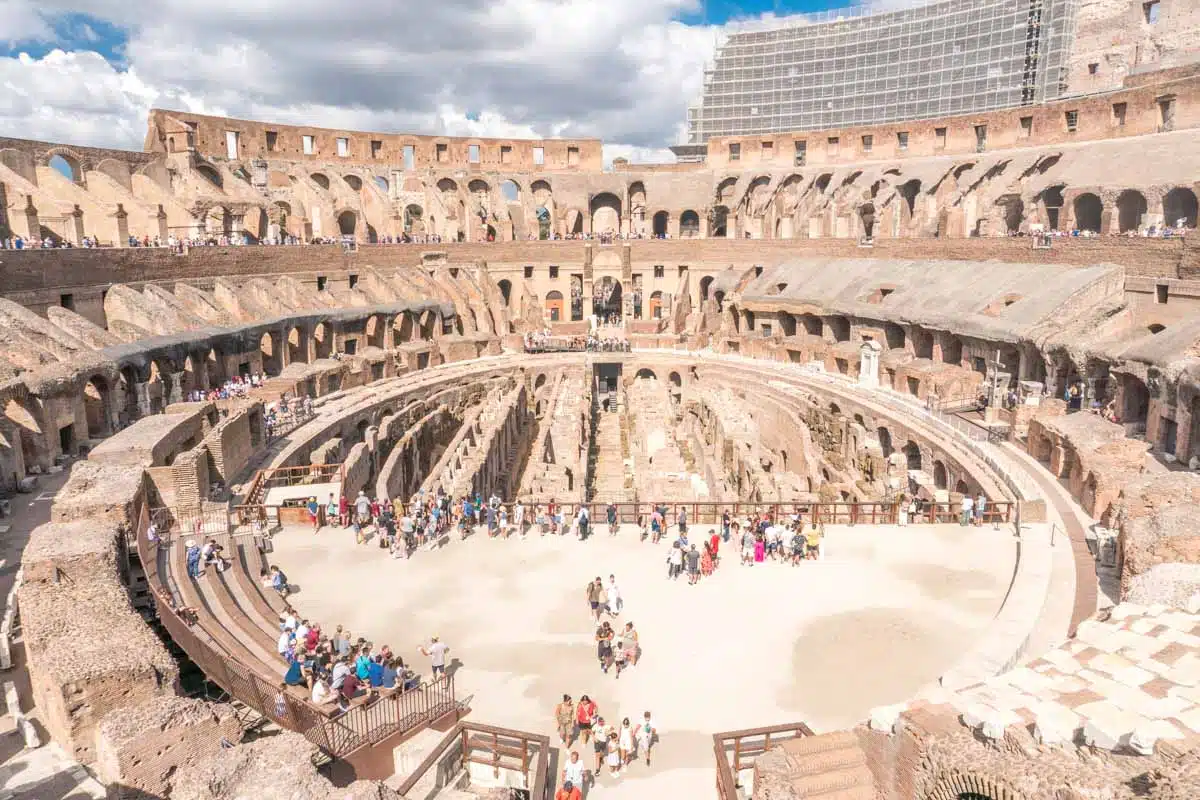
Did you really visit Rome if you didn’t visit the Colosseum? I don’t think so.
Built between 70 and 80 AD, the Colosseum is the largest ancient amphitheatre ever created, so it’s no wonder it gets a lot of fuss. Forever a symbol of the greatness of Ancient Rome, its opening alone saw shows lasting 100 days with over 1,000 gladiators and 5,000 animals.
While we might be missing the gladiatorial shows today (thank goodness), visiting The Colosseum is an unforgettable experience, a chance to plunge back in history to millennia past, seeing the columns, arcades and pillars whose structures hide tales of death and glory.
Top Tip
Buy skip the line tickets and go for the earliest entrance to explore the sight when its at its quietest.
Walk Around The Forum & Palatine Hill
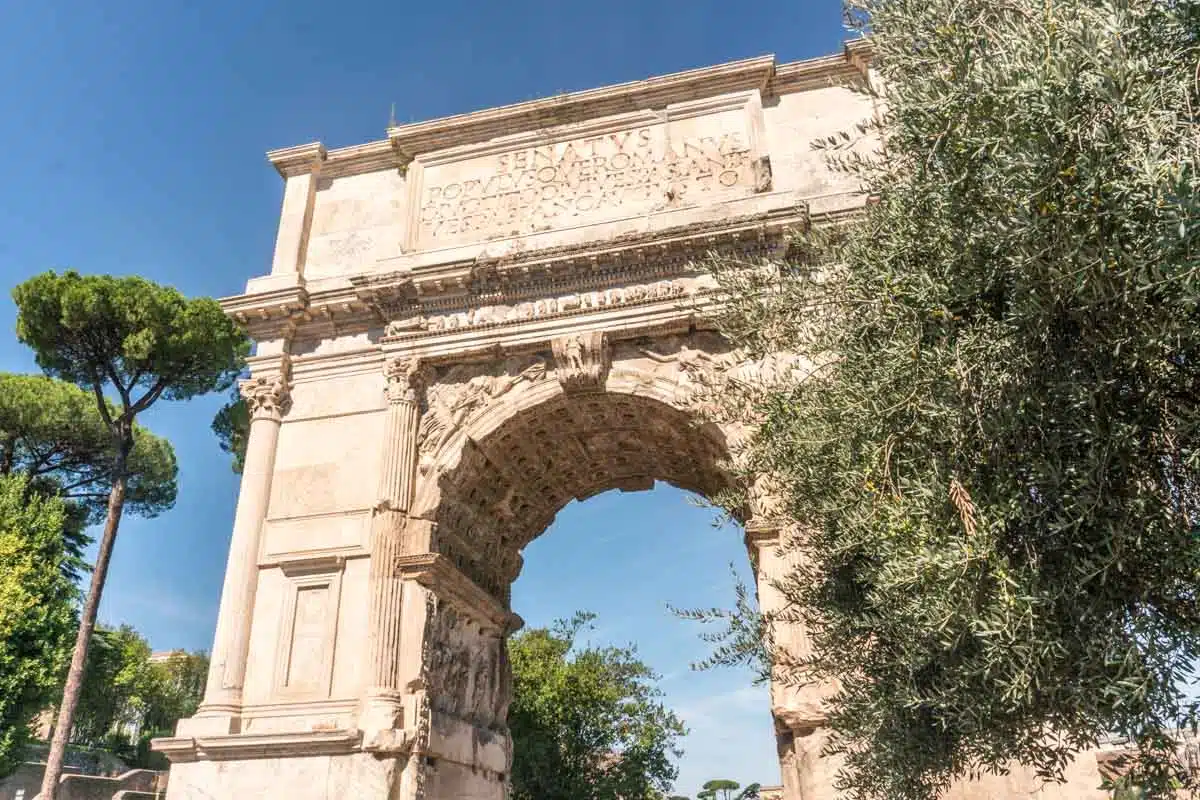
Just across the road from the Colosseum, you can’t come to Rome without spending some time at the Roman Forum and Palatine Hill.
The Forum was the centre of Rome, where government buildings stood and a lively marketplace brought in crowds of people every day.
The area was first drained in 6 BC, and gradually turned into the city’s hub in subsequent centuries, but it was Caesar who set about on a large-scale extension that was carried on by Augustus and subsequent successors. It was during this extension that many of the ornate triumphal arches, columns and statues you still see today were built to showcase a city at the peak of its power.
By the 6th century AD, it started to decline – columns and other materials were taken from the Forum and used to construct other buildings across the city.
So, what should you keep an eye out for when you’re visiting? There are so many that it’s hard to pick a few! The Sacra Via is the oldest street in Rome and climbs up to the Capitol, while the Arch of Septimius Severus (erected AD 203) honours a series of Victories over the Partihians.
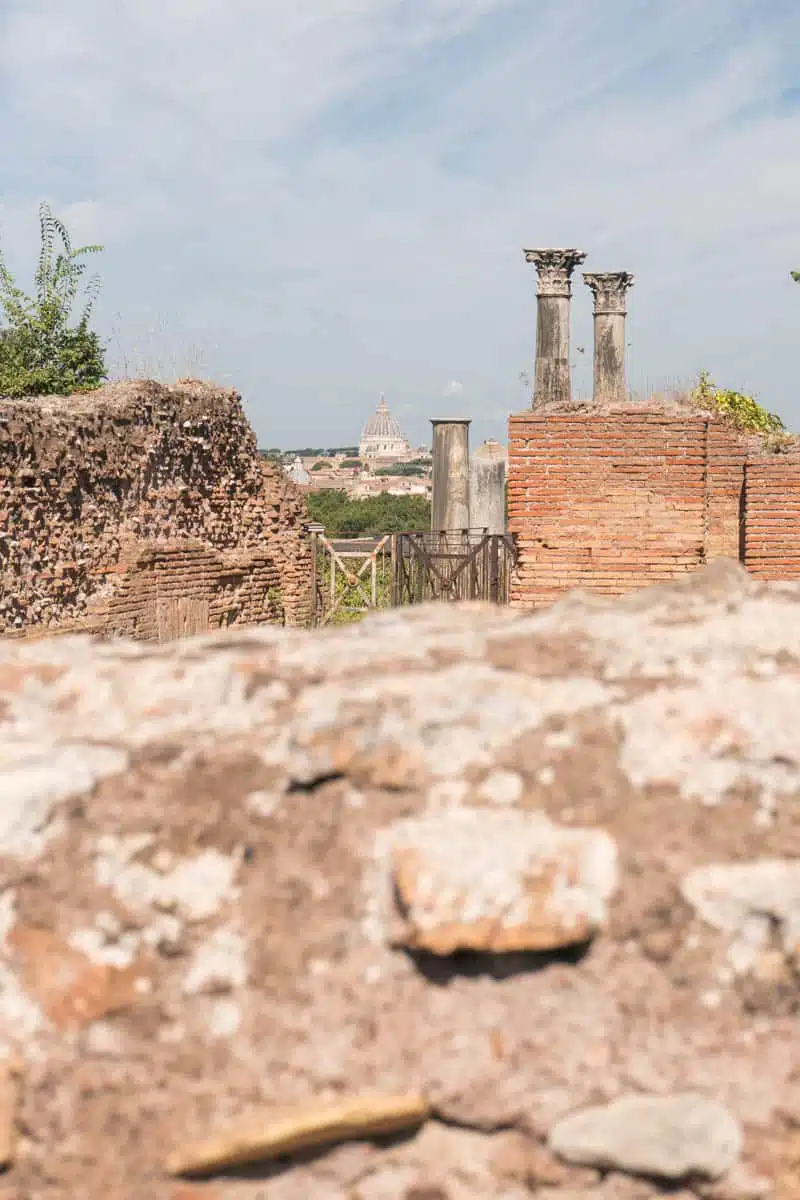
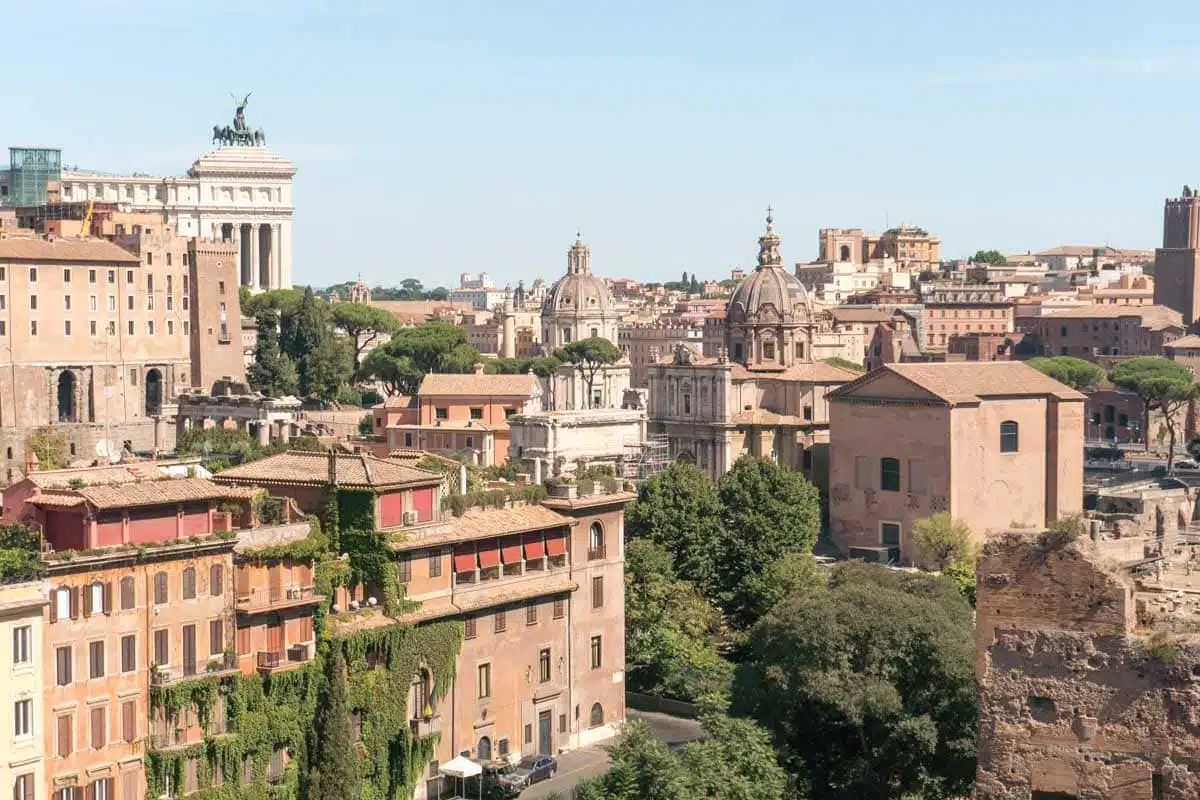
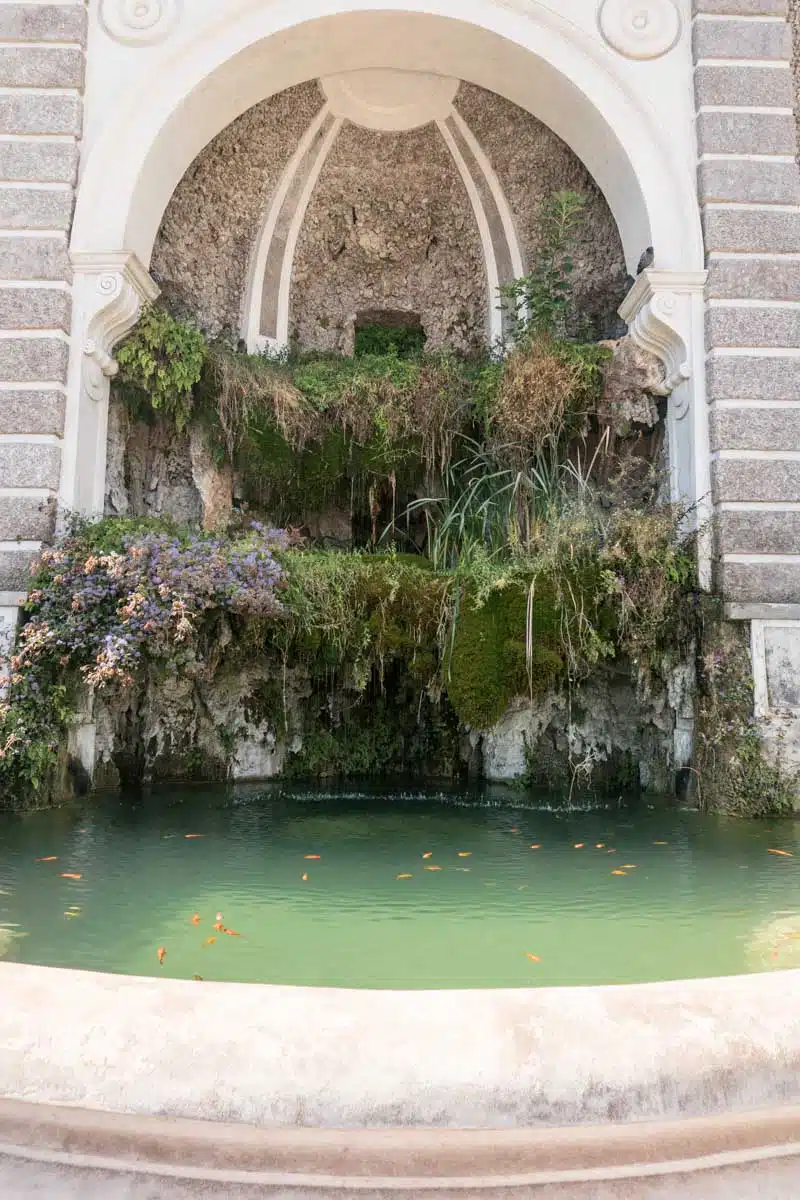
What about Palatine Hill? Supposedly the birthplace of Rome’s founders, Romulus and Remus, it maintained its position of importance within the city, thanks to the great imperial palace, the Palatium, which was built on the hill by the Emperor Augustus.
Stroll around, exploring the Farnese Gardens – the terraces give you stellar views of the city and shouldn’t be missed!
Top Tip
Did you know that the word palace comes from the Palatium on Palatine Hill?
Explore the Vatican City
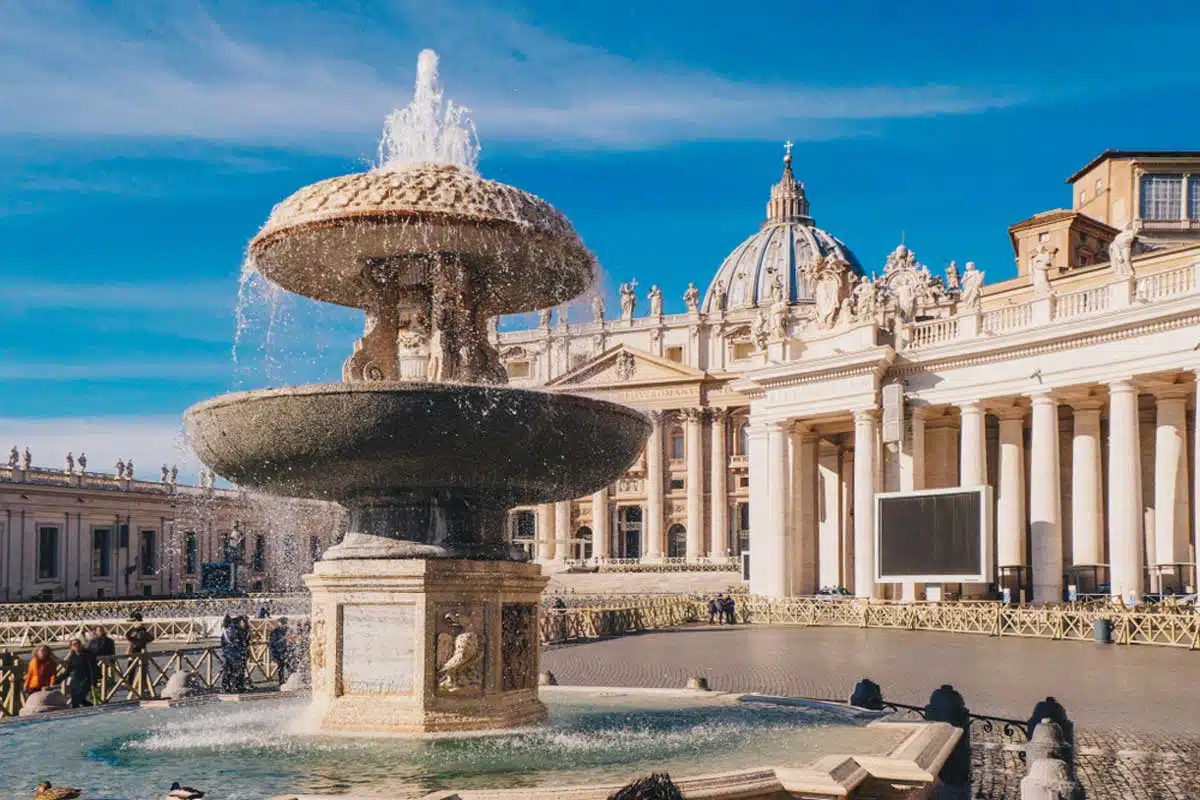
No trip to Rome is complete without visiting the Pope’s house. Facts.
The Vatican City is a tiny country within the boundaries of Rome and home to some of the most famous landmarks in Italy – most famously, St Peter’s Basilica, the Sistine Chapel (and yes, it really is that spectacular in person) and the Vatican Museums.
I’ll level with you, a trip to the Vatican City is never going to be a calm or quiet experience – but exploring the vast maze of Baroque and Gothic architecture of the Vatican Palace and Museums that lead to the calming gardens throughout the course of a day or two is an absolute must.
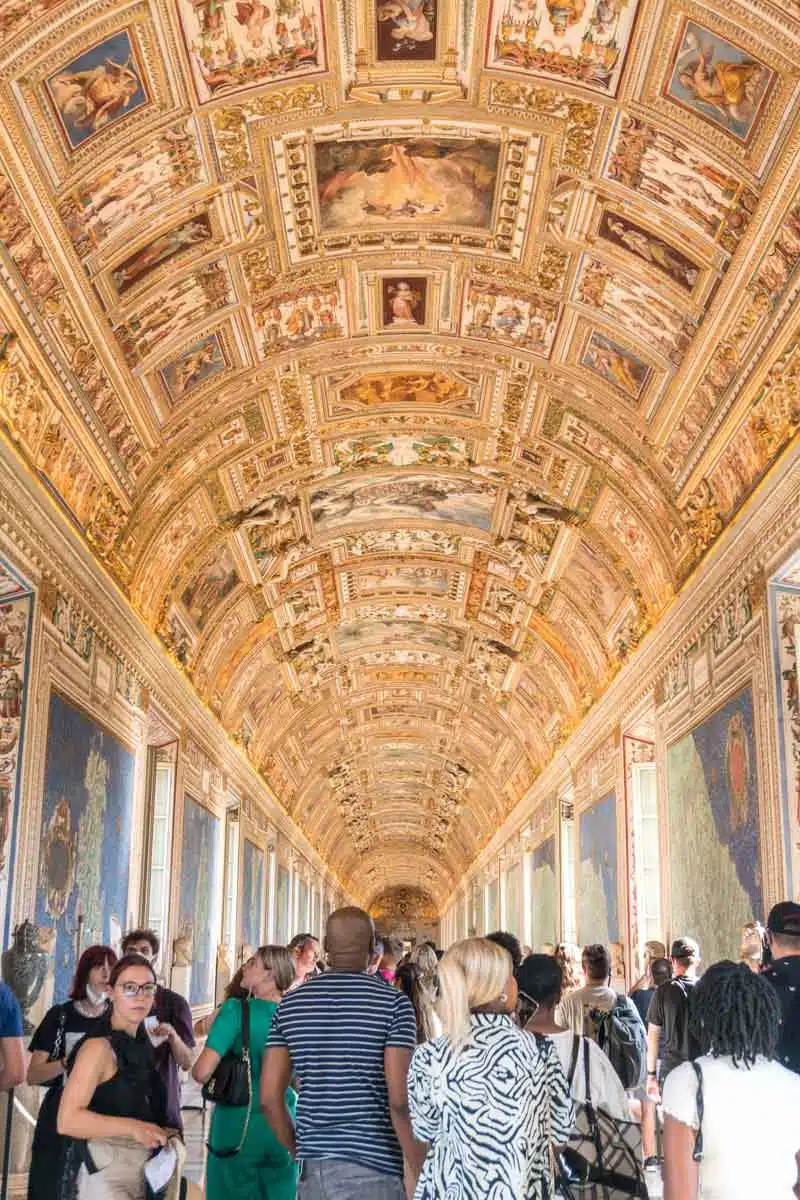
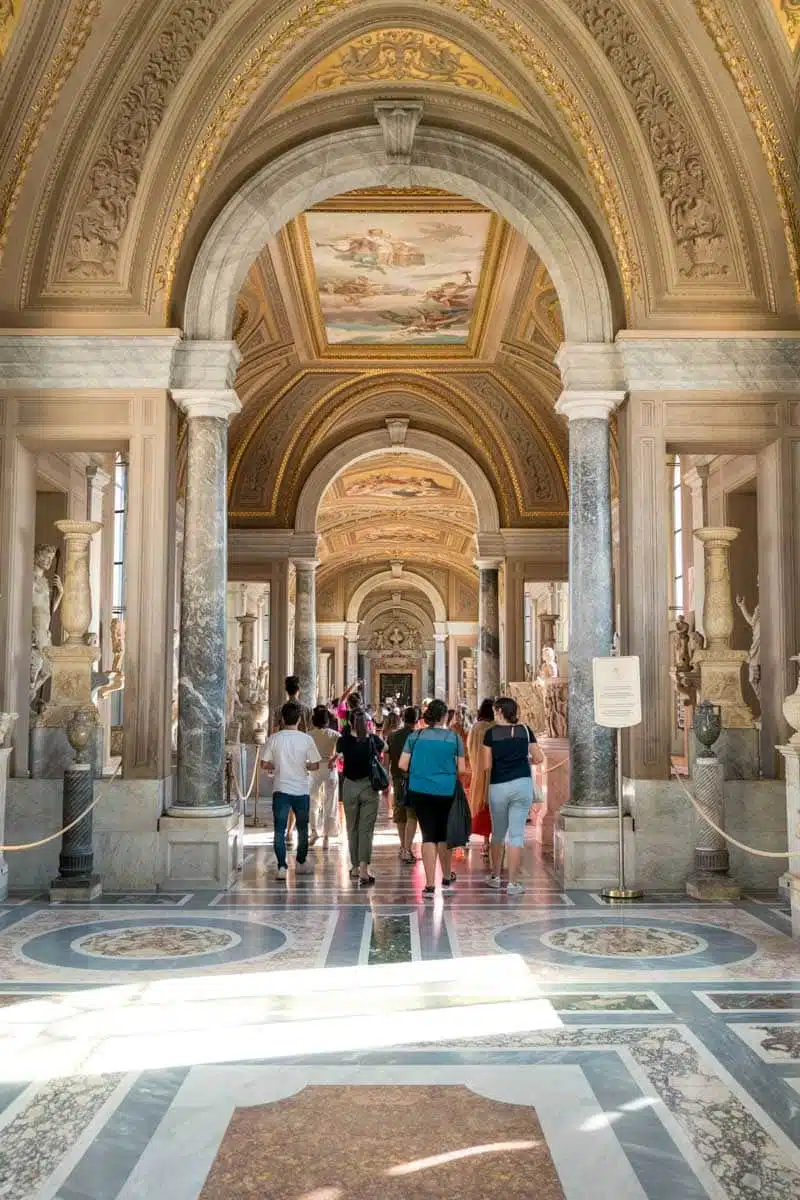
Set aside at least a day to visit the Vatican Museums, home of famous artworks such as Raphael’s Transfiguration and the Laocoön sculpture. You tour the museums (which include an Egyptian Museum and Etruscan Museum among many others) via a one-way route – with an exit at the Sistine Chapel.
Top Tip
Head to St Peter’s Square by 12pm each Sunday to see the Pope giving the “Angelus” papal address.
St Peter’s Basilica
You can’t’ skip St Peter’s Church either: the present building dates back to 1506 with all of the Renaissance’s architectural greats – including Bramante, Raphael and Michelangelo – having a hand in creating the stunning building you see today.
The vast cathedral’s ever-present dome peeps onto the skyline wherever you are in the city. Inside is just as striking – gilded arches and intricately carved wood wherever you look.
Marvel at the Sistine Chapel
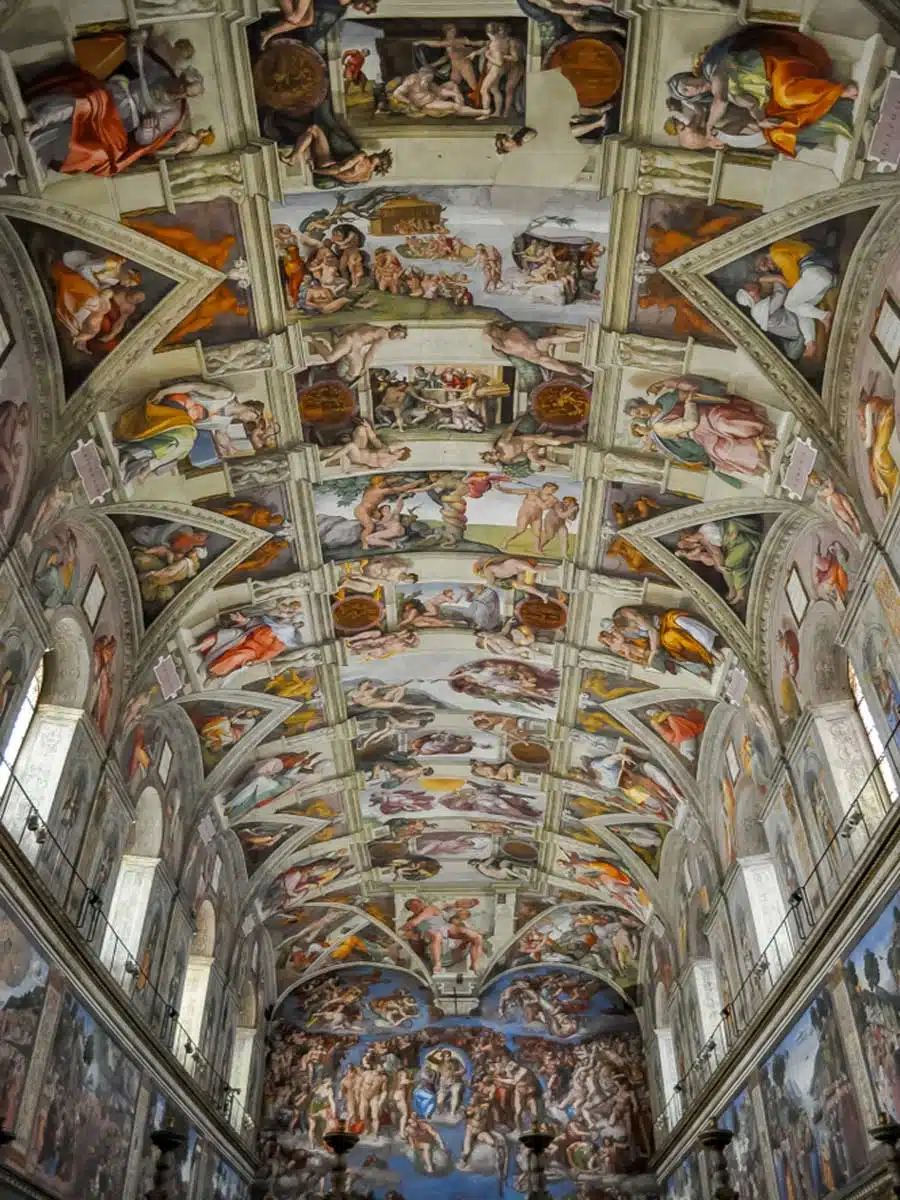
Alright, I know I gave you a little teaser of the Sistine Chapel above – but I think we can all agree that it totally deserves its own entry, along with the stunning Saint Peter’s Basilica.
The Sistine Chapel is Michelangelo’s masterpiece, a jaw-dropping series of ornate murals that swirl around the small chapel in a frenzy of biblical narrative. One moment you’re looking at the iconic figures of The Creation of Adam, the next the apocalyptic rapture of The Last Judgement.
The paintings in the Sistine Chapel are some of the most famous in the world. Those of the upper side walls were the works of some of the best painters of the day: Perugino, Boticellii, Pinturicchio and Ghirlandaio among them, but it’s the ceilings (1508-12) that often steal the attention. Painted by Michaelangelo, they depict the Creation, the Fall and its consequences – a theme that was continued by the painter in The Last Judgement when he painted it almost 30 years later.
Sure, the Sistine Chapel will be busy and yes, the guards clearly love barking out orders to poor tourists just trying to get a look at one of the greatest masterpieces ever wrought by human hand… Even so. It. Is. Absolutely. Worth. It.
Do
Join this Sistine Chapel and St Peter’s Basilica tour, where you can learn about both buildings’ history and skip the ticket lines – plus it includes entry before the majority of the crowds.
Spend Some Time at the Trevi Fountain
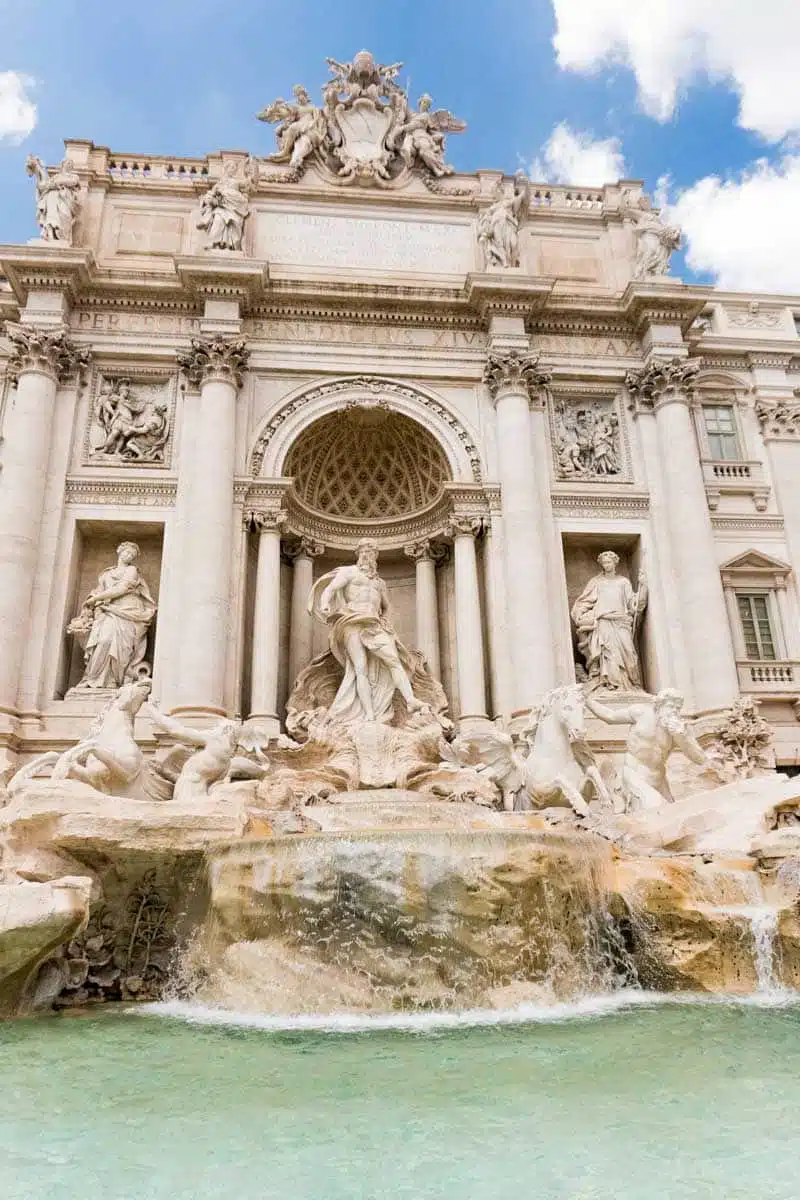
It would be easy to dismiss the Trevi Fountain as just another overblown tourist trap… until you lay eyes on it.
The most monumental of Rome’s baroque fountains, the Trevi Fountain was designed by Niccolo Salvi (based on designs by Bernini). It depicts Neptune, flanked by figures of Health and Fertility.
It really shouldn’t come as a surprise that of all the places you visit in Rome, you’re going to run into some significant crowds at the Trevi, particularly in the middle of the day. Not your thing? Get up early or visit later in the evening.
Top Tip
Did you know that you can also explore the ancient aqueducts below the streets that still supply water to Trevi Fountain? I’ve written an entry for the Vicus Caprarius later on in this guide.
Walk Around Trajan’s Forum and Market
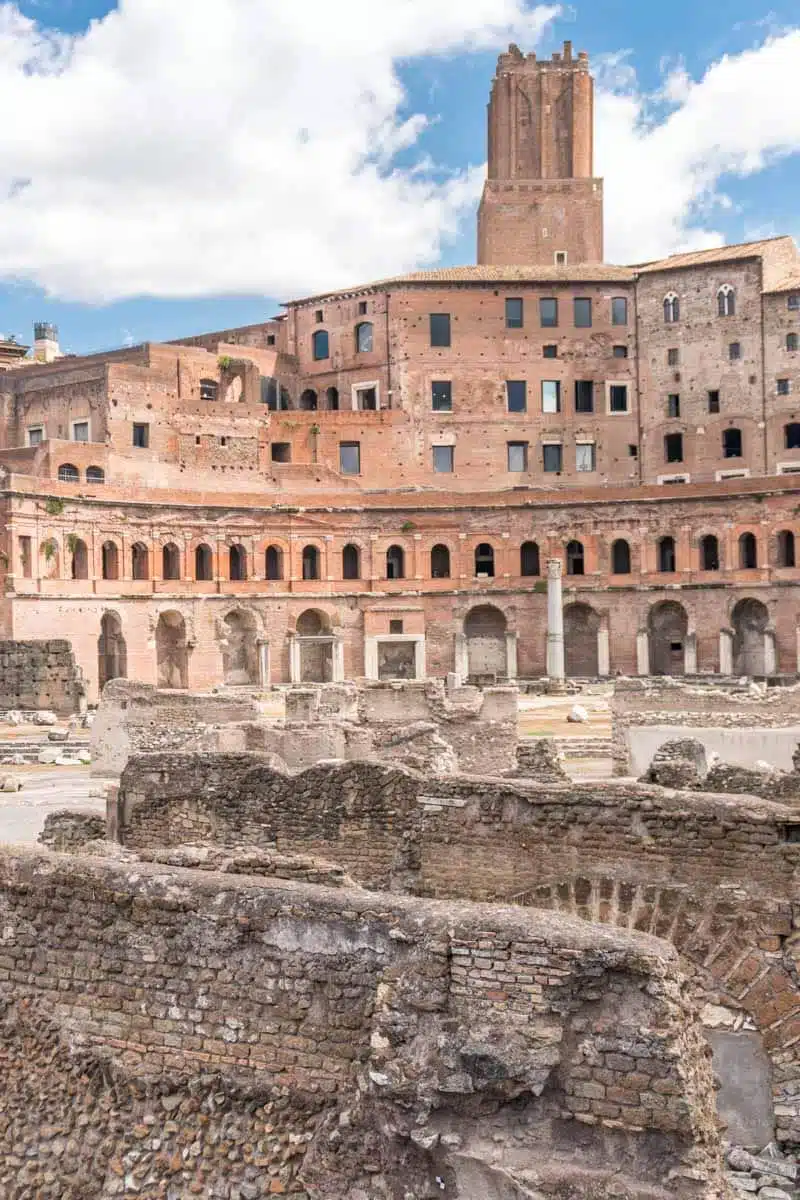
Although the Roman Forum across the road gets a lot of attention, you shouldn’t miss Trajan’s Forum and Market, which were built to accommodate Rome’s massive growth in the 2nd century AD.
Trajan’s Forum is the largest (not to mention most magnificent) of the Imperial Fora and would have originally been made up of the Forum proper, a temple and two libraries. This is also where you’ll find Trajan’s Column – looming 38 metres high, it was restored in the 1980s.
Next to it, Trajan’s market is a semicircular brick structure – for a long time, people thought it was the world’s oldest shopping mall but more recent evidence points to it being the emperor’s administrative offices, which isn’t quite as exciting at all.
Top Tip
Trajan’s Column originally held the Emperor Trajan’s ashes in a golden urn concealed in its base.
Climb The Spanish Steps
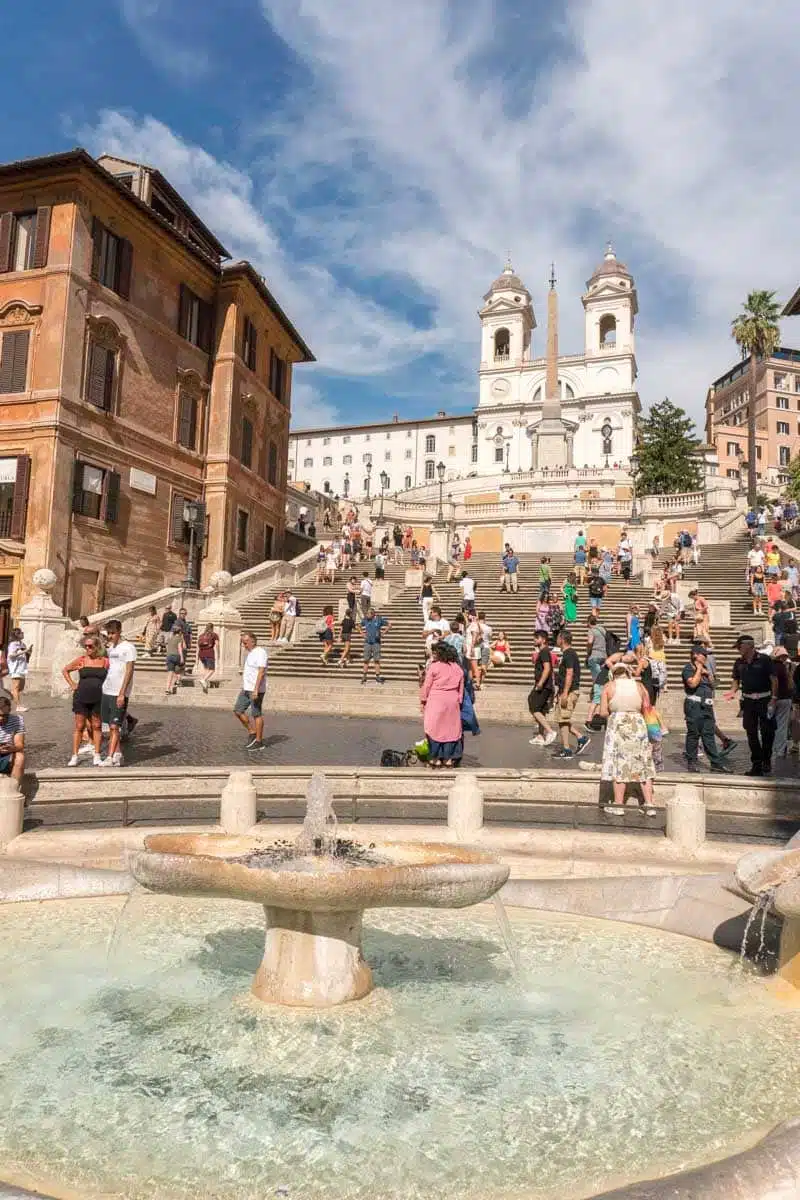
It’s impossible to miss the Baroque glory of the Spanish Steps – a series of 137 steps leading from the Piazza di Spagna to the church of the Santissima Trinida dei Monti.
Normally festooned with flowers, they were designed by Francesco de Santis and built between 1723 and 1726.
Top Tip
While it’s OK to climb up the steps, it’s illegal to sit on them and you can be issued with a fine if you do!
Explore Rome’s Catacombs
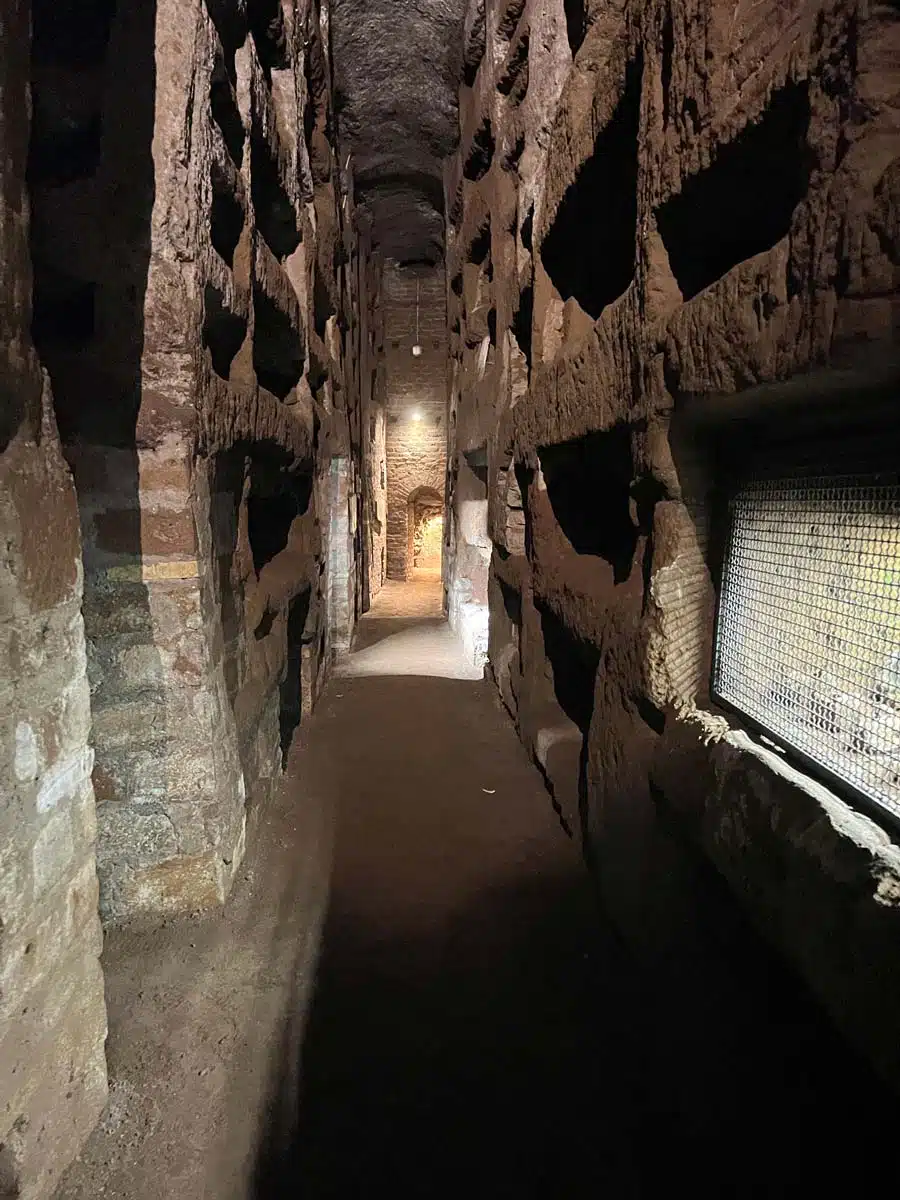
Paris’ offering might be more famous, but Rome’s Catacombs are equally fascinating, I promise.
Get ready to delve a little bit deeper underneath the streets of Rome, where you can explore centuries-old catacombs that were once ancient burial sites. Only five catacombs are open to the public, but archaeologists have found more than forty over the years.
The Catacombs of St. Callixtus aren’t just the largest tomb in Rome, but they are among the most important. You can explore 90 acres of this underground world where 16 popes were buried between the 2nd and 4th centuries.
The Catacombs of San Sebastiano and the Capuchin Crypt are the most famous in Rome. San Sebastiano Catacombs stretch for an impressive 7.5 miles, while the Capuchin Crypt contains the bones of 3,500 monks.
Take the chance to learn about a darker side of Rome’s history while walking amongst the eerie pathways and looking into the moody tombs. Although it can be a bit unnerving, this is an unmissable Roman adventure.
Read Next
Stroll Around the Piazza Navona
The most iconic of Rome’s (many) squares, the Piazza Navona is itself a jaunt through the city’s history.
It gets its rather distinctive shape from the fact that it was built on the former site of the Stadium of Domitian and is adorned with three fountains, the most impressive of which is a striking affair designed by Bernini with figures to represent four rivers – The Nile, Ganges, Plate and Danube centred around an ancient obelisk.
Other highlights at the Piazza Navona include the imposing Baroque church of Sant’Agnese in Agonale and Santa Maria della Pace, where you can peek at figures of the Sibyls painted by none other than Raphael.
See the Castel Sant’Angelo
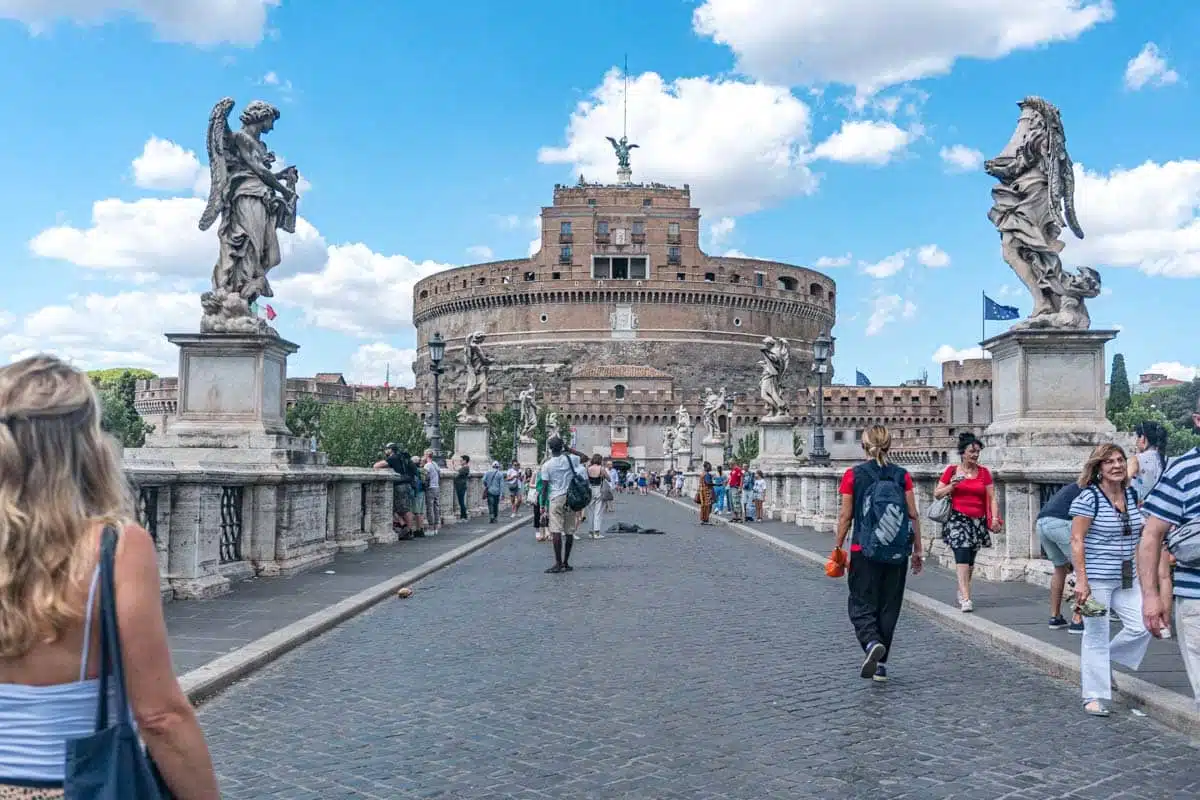
Perched at the end of the Ponte Sant’Angelo, whose sculpture-lined path forges across the River Tiber, The Castel Sant’Angelo has a complex history.
Originally built as a mausoleum for the Roman Emperor Hadrian in 139 A.D., the towering building was used as the final resting place for a number of emperors, then a fortress before passing into the hands of the popes in 1379 and is now a museum for all to enjoy.
It’s perhaps most famous for being the tomb of Emperor Hadrian – and you can still visit this tomb today. The museum also has a vast art collection, including the amazing etching Girandola by Francesco Piranesi.
Top Tip
The popes built a covered passage, the Passetto di Borgo, leading the 800 metres from Castel Sant’Angelo to the Vatican City. It’s open for a couple of months in the summer to small groups on guided tours.
Enjoy a Sunny Day at Villa Borghese
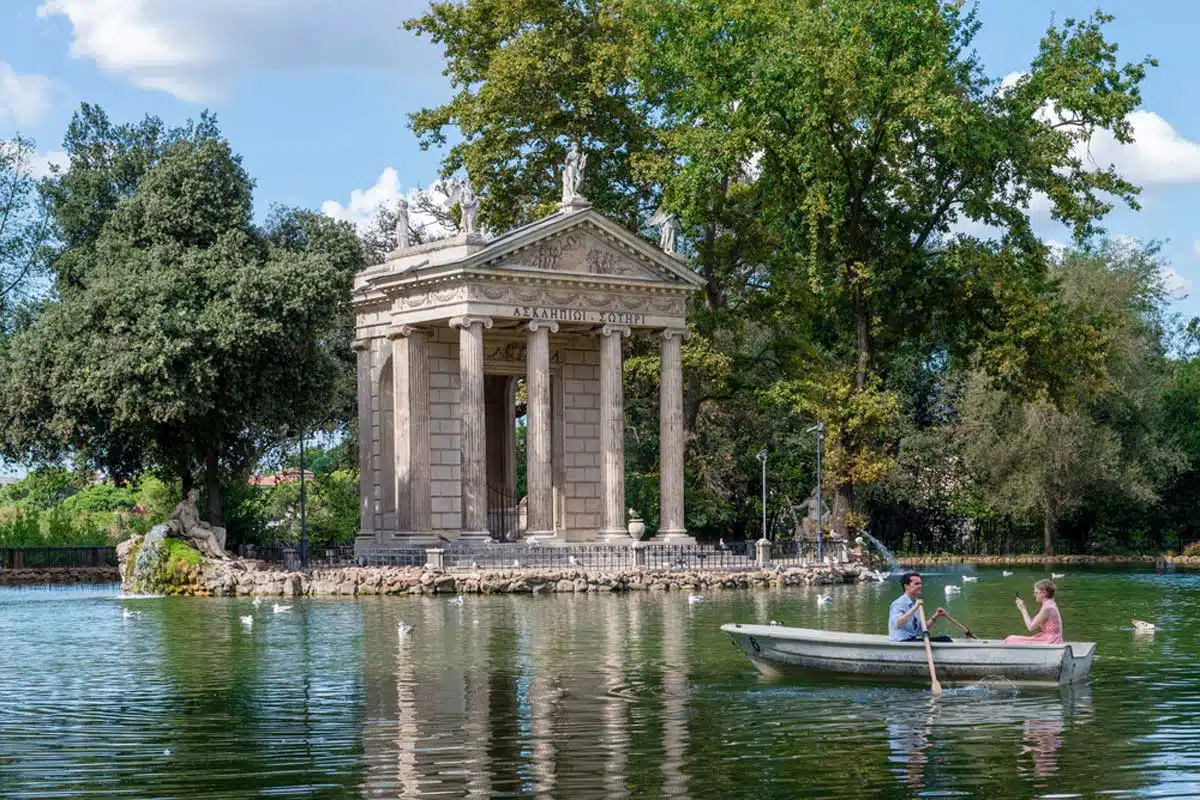
Spending a sunny day roaming around the beautiful Villa Borghese is one of the best ways to see Rome on the cheap.
Dating back to the 17th century, it’s the third biggest Roman public park – a glorious combination of chestnut trees, lakes, ornamental buildings, fountains and monuments. Even more, it offers easy access to some of the most iconic buildings in the city, such as the Villa Borghese Gallery. You have to pay $13 USD to enter the gallery, but it’s well worth it.
Visit the Monument to Goethe and the Villa Borghese sculpture, both perfectly carved out of marble. Or, head to the impressive Temple of Ascelpius where you can rent a pedalo and float on the lake.
Visit the Arch of Constantine
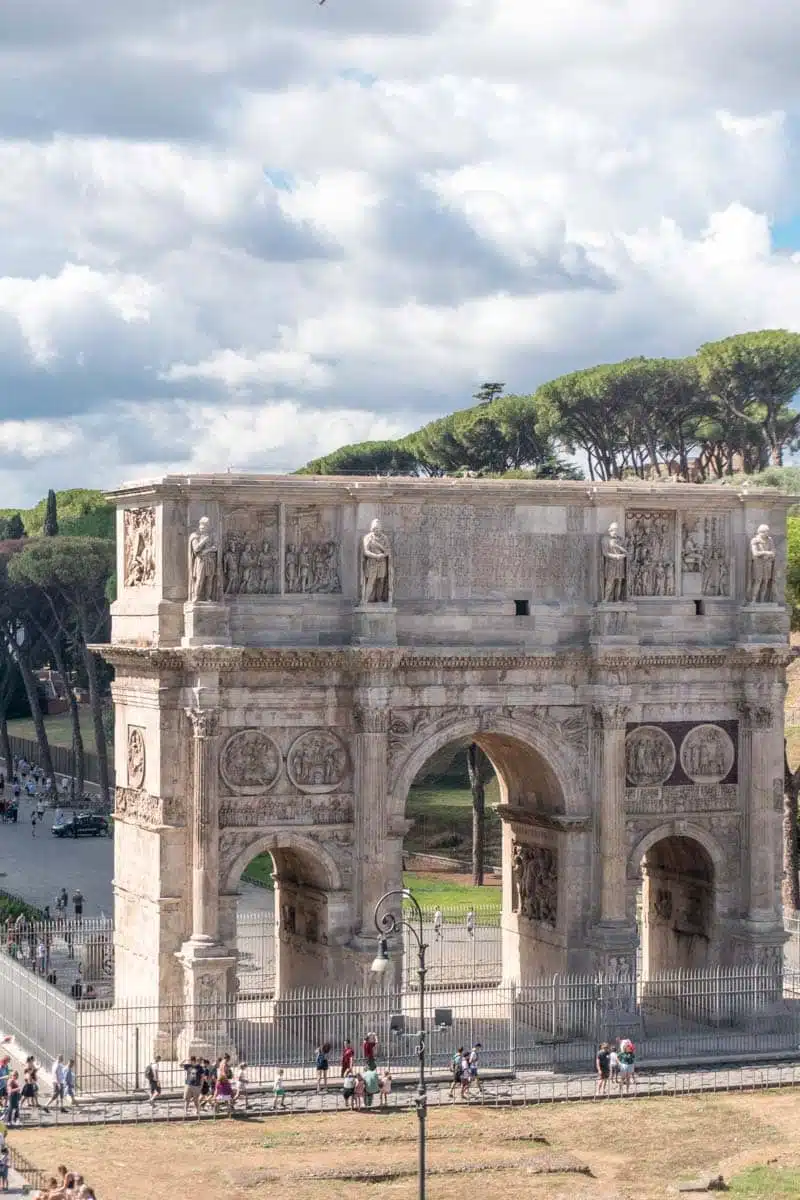
European capitals love an arch, but the Arch of Constantine might just be my favourite. This elaborate arch gleaming in white marble recognises the victory of Emperor Constantine over Maxentius at the Battle of Milvian Bridge (AD 312).
The detailed relief sculptures show the significant battles and historical events of past emperors that led to Constantine’s success. Not only is it the last Roman triumphal arch that was built in the city, but it’s also right next to the Colosseum.
Join the Masses at Piazza Venezia
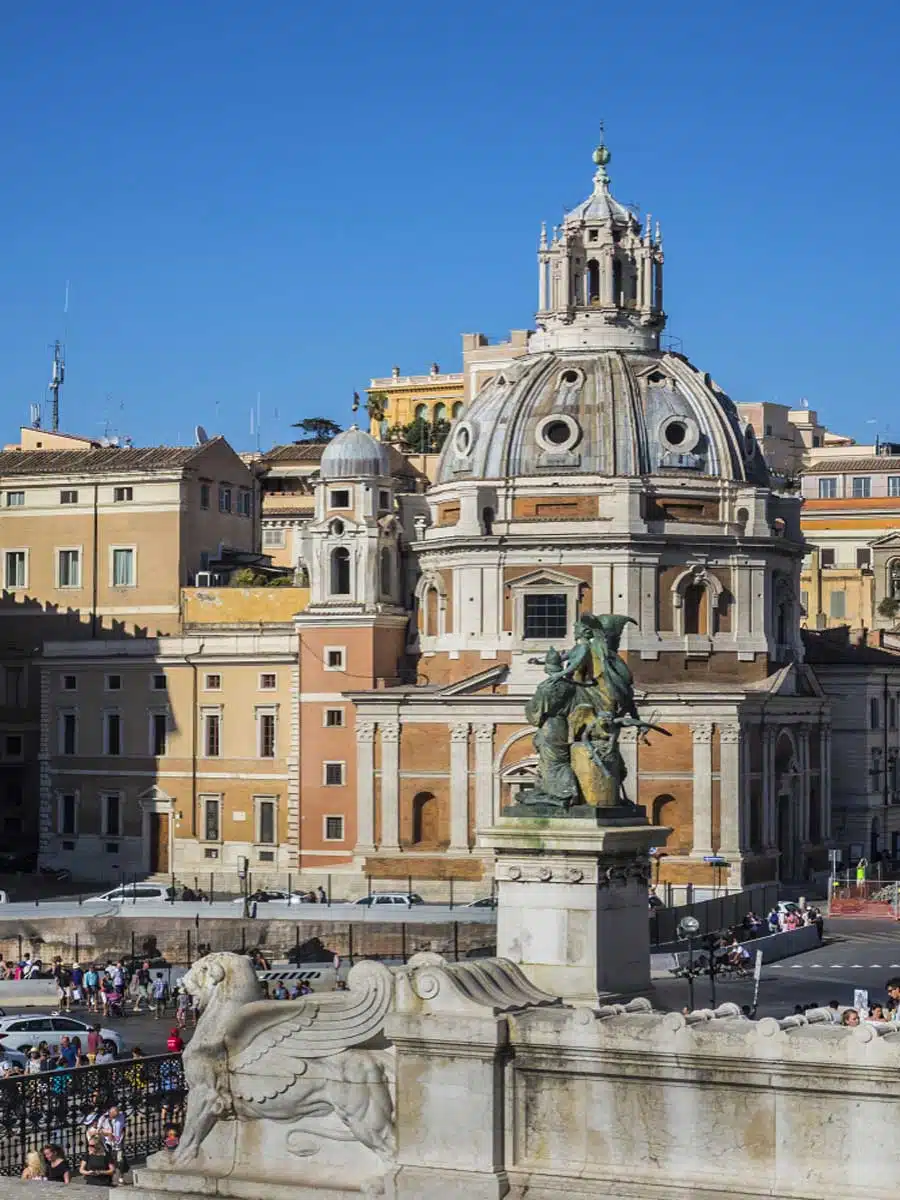
The Piazza Venezia is home to iconic buildings such as the Altar of the Fatherland, which celebrates Italian unification and was home to the first King.
Not all of its past is so rosy though. The museum at the centre of the square was once the headquarters of the fascist ruler Mussolini during World War II.
Marvel at the Wonder of the Pantheon
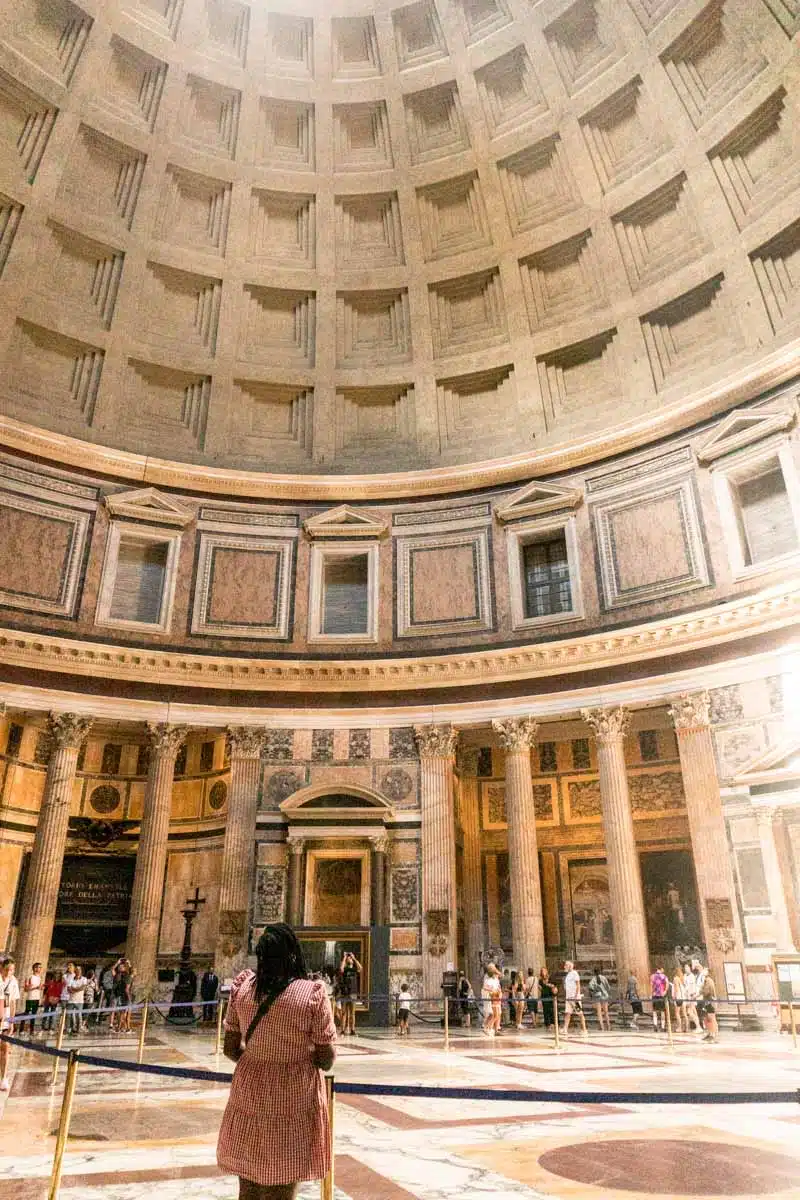
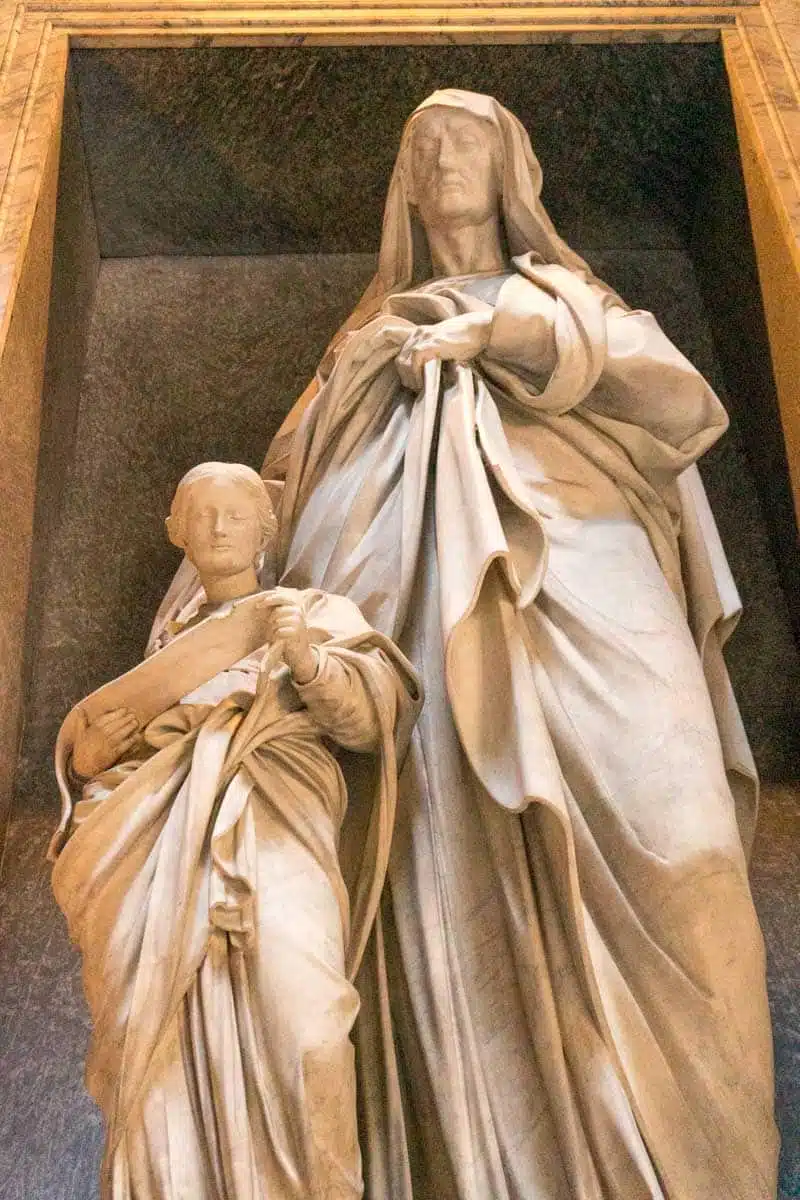
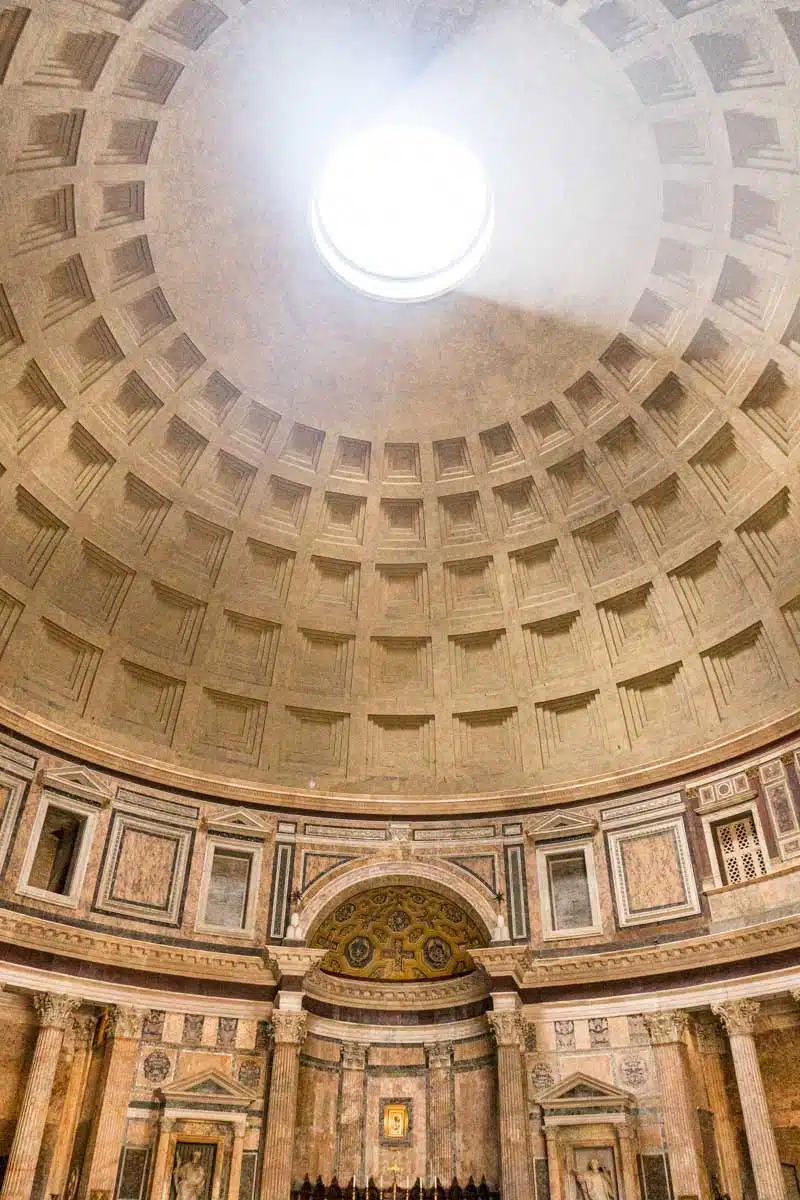
Dominating the Piazza della Rotonda, the Pantheon is the best-preserved ancient Roman building in the world.
The building was first built in 27 BC as a temple to honour the Roman gods, and was extended and embellished by a series of emperors.
That’s not where the story ends though: after the extinction of paganism, it was consecrated by Pope Boniface IV as the Church of Santa Maria ad Martyres in 609 – though it was most frequently called Santa Maria Rotunda.
Visit today to see its cavernous structure filled with mesmerising sculptures and artwork. I won’t lie, I actually didn’t go inside the Pantheon on my first visit to Rome and I’ll readily admit that was a mistake.
Huge bronze-clad doors give way to sixteen granite columns and *that* dome.
A large coffer — a hole in the centre of the building or the “Eye” — allows light to stream in and fill the hall with an incandescent glow.
Tickets
You will need to pre-book your tickets to visit as tickets are no longer sold on the door.
Enjoy Trastevere’s Nightlife
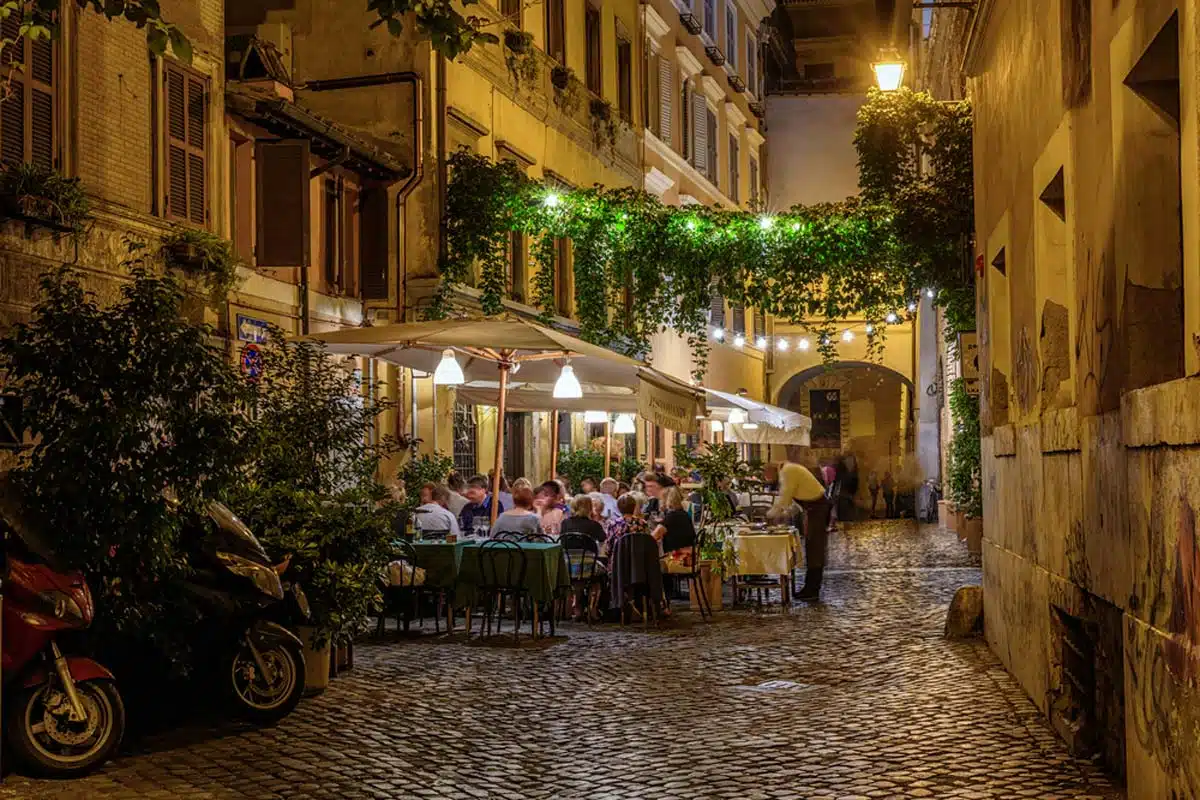
Trastevere is a colourful neighbourhood in Rome known for its authentic Italian cuisine and affordable accommodation. No surprise then that this area has plenty of cool things going on.
It’s a unique and vibey part of the city, with craft beer pubs and artisanal shops spread across the area. Visit Delirium for the best craft beer in the world (I don’t make the rules, sorry) and if you want to enjoy an out-of-this-world Italian meal, pop in to Nannarella.
If you’re looking for the beating heart of Trastevere, Piazza di Santa Maria has the best bustling nightlife in all of Rome.
Visit the Charming Via del Boschetto
One of Rome’s most charming spots is in the bohemian Monti district in which the Via del Boschetto is the main place to go.
This is Rome on a minor scale, all the city’s many charms encapsulated on a single cobbled lane.
Full of wine bars, boutique shops and restaurants, all of which are independently owned, with their own individual niches and not a big-name brand in sight. My favourite spot was the fashion boutique owned by Danish genius Tina Sondergaard – after which I headed to one of the city’s best wine bars, La Barrique just down the road.
Take a Peek at the Aventine Keyhole and Explore the Orange Garden
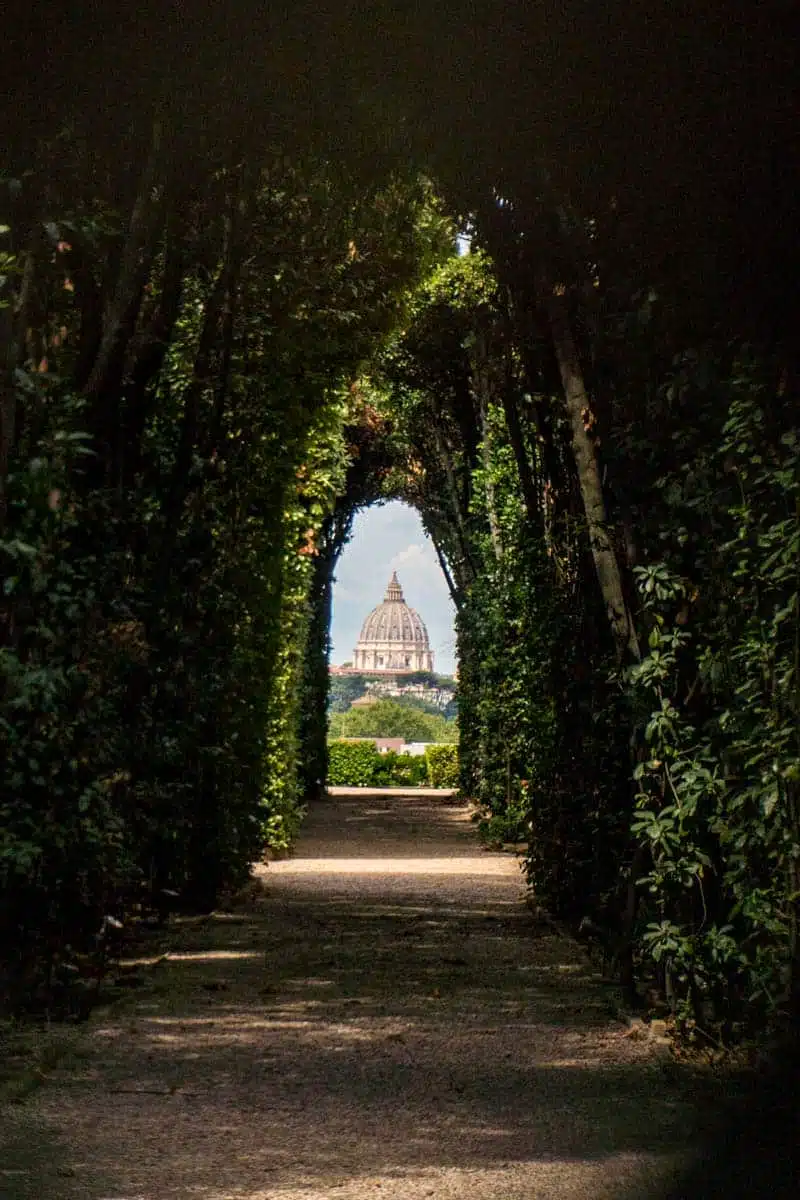
The Aventine Keyhole is hands down one of my favourite spots in the city – and the place to go for a unique perspective of the St. Peter’s Basilica Dome.
Take a peek through the keyhole for a framed glimpse of St. Peter’s dome, causing an optical illusion that makes it appear closer than it is. And makes for a great photo.
The Orange Garden is so much more than just the Aventine Keyhole – it offers spectacular views of the city from the Parco Savello terrace. And there’s more to see, from the fountain of the mask sculpture to the distinct orange trees from which the park gets its name.
Enjoy the Street Art in Ostiense
You might not think of street art when you think of Rome, but you can find plenty of it in Ostiense.
I was impressed by the pure talent of some of the works on display, such as BLU’s work on the old Italia Air Force warehouse. Another amazing piece you have to see is the largest ecological mural in Europe by Iena Cruz in Via del Porto Fluviale.
Do
This Ostiense street art walking tour will take you through the hidden parts of Rome that showcase some terrific art, all led by an art historian.
Admire the Santo Stefano Rotondo
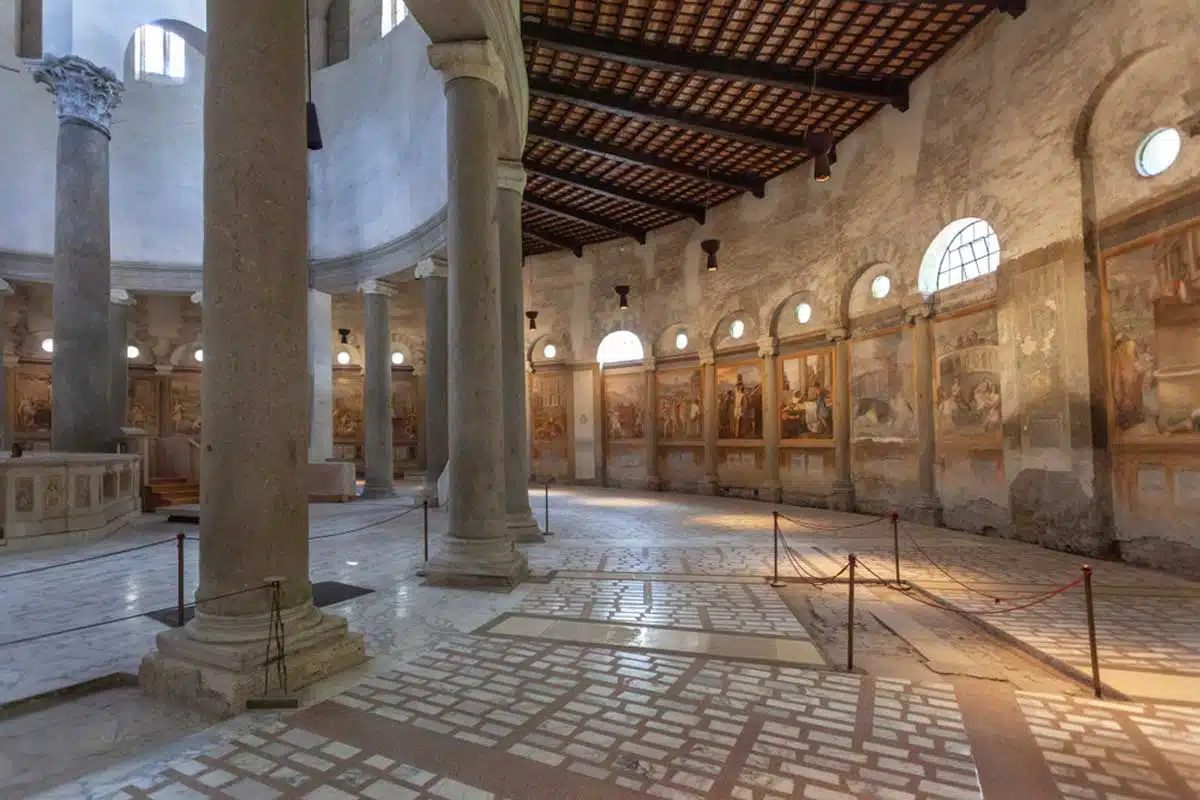
The Santo Stefano Rotondo may not be super extravagant, but it’s still well worth popping by.
The name is something of a giveaway – this round church (which was built over a Temple of Mithras) is one of the more unusual pieces of architecture in the city. It features 56 columns and an open-timber roof. In fact, it’s pretty incredible how precise the finish is – particularly when you consider that this beautiful building is from the 2nd century!
The exquisite fresco paintings by Antonio Tempesta depict the tragic deaths of 34 martyrs. You should also check out the Byzantine mosaics depicting a non-crucified Christ on an elaborate cross.
MAXXI Rome
Not everything in Rome is devoted to the city’s ancient origins, or the Middle Ages and its links with the Renaissance.
MAXXI Rome is an awesome spot to spend a few spare hours. The stunning modern building was designed by architect-extraordinaire Zaha Hadid and is home to everything to do with contemporary art.
Exhibitions include contemporary fashion, art, architecture and, of course, film, and while it gets busy, the huge cavernous, labyrinthine interior makes it easy to negotiate without feeling overwhelming. Among the permanent galleries are several cool temporary exhibitions that often include performances and film pieces.
Explore the Baths of Caracalla (Terme di Caracalla)
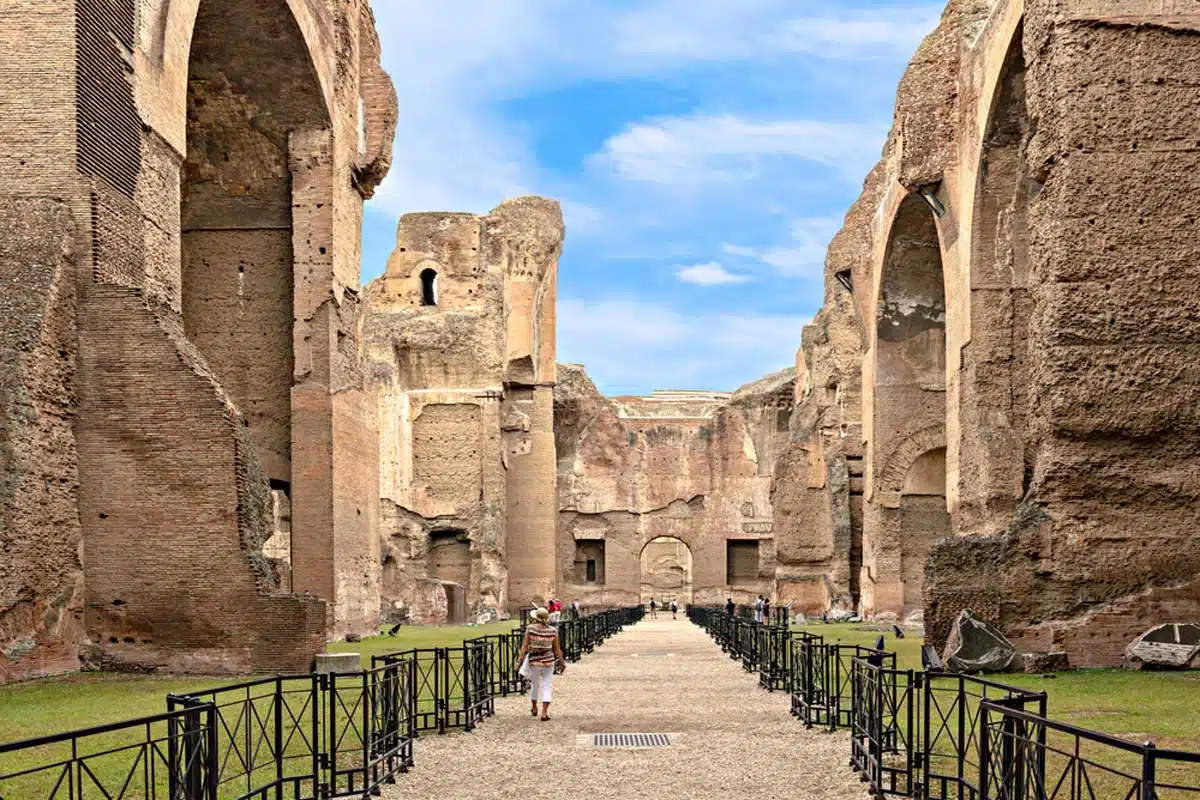
The Baths of Caracalla are now ruins of crumbling walls, elaborate floor mosaics, and fallen arches that spread for an astonishing 27 acres.
Back in their heyday, 1,600 people could bathe at Caracalla at a time – they’d have made their way between the caldarium (hot bath), frigidarium (cold bath) and other sections for a complete bathing experience.
Top Tip
If you visit in the summer months, you can book a live opera performance at the baths too.
Indulge in an Authentic Italian Cooking Class
Looking for the best things to do in Rome, Italy? Brush up on your cheffing skills by joining an authentic cooking class.
An Italian cooking class is a fantastic way to learn some new skills in the kitchen with first-hand experience from a professional Italian chef. At the end of a lovely class, indulge in the delicious food you made, along with some complimentary drinks. The best part, IMO.
Do
In this pasta-perfect cooking class, you will learn the ancient techniques of pasta making and how different pasta works with specific sauces.
Ride Down The Appian Way
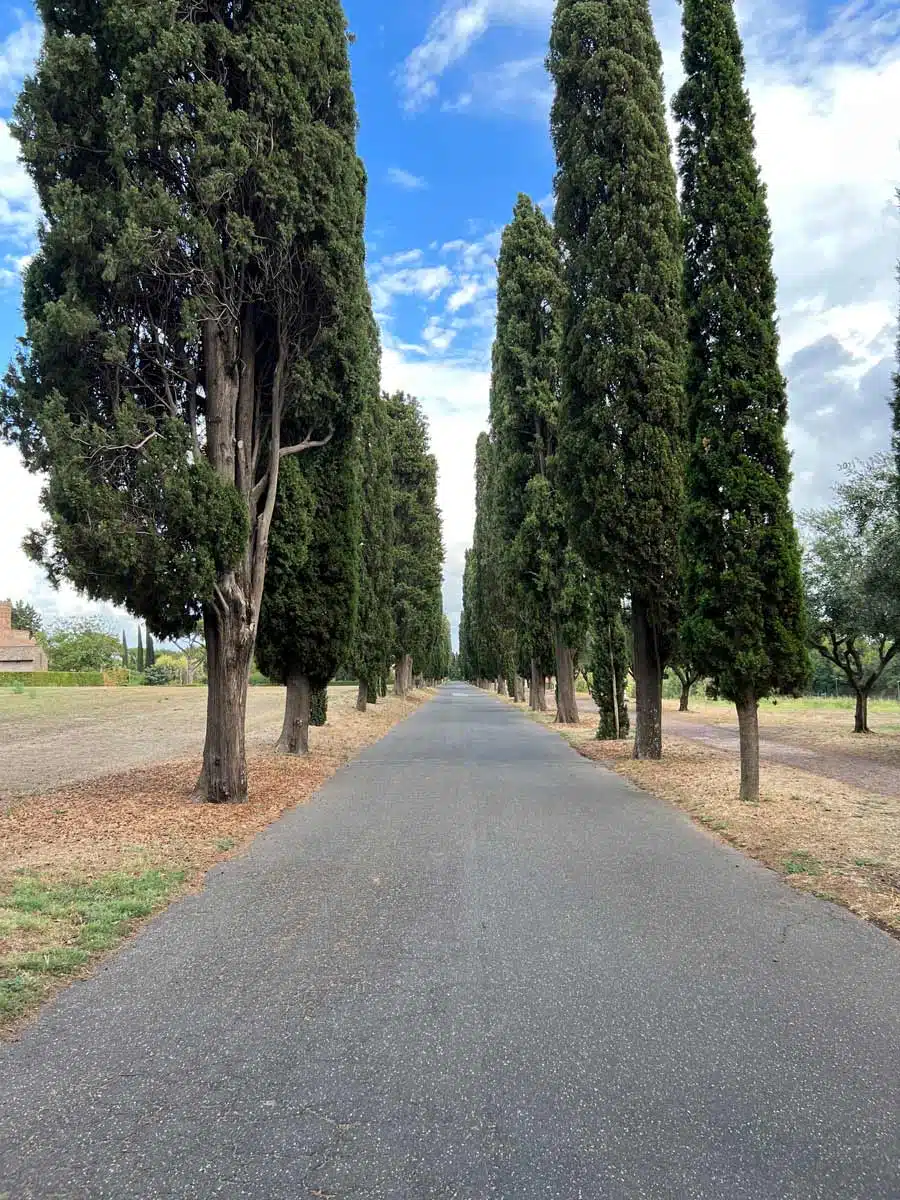
Taking a gentle bike ride down the Appian Way is a must for your time in the city. The road was one of the first strategically built roads from Rome to Brindisi in southeast Italy.
Now, the Appian Way Park encapsulates most of this iconic road and offers breathtaking views of the Italian countryside. There are some fantastic sites to see during your ride, from the photogenic ruins at the Circus of Maxentius to the small church of Domine Quo Vadis.
Explore the Renaissance Art at Villa Farnesina
Think of Italian art and you’ll think of the Renaissance. One of Rome’s finest collections can be viewed at the Villa Farnesina.
It was once the private residence of one of the period’s wealthiest individuals, Agostino Chigi (the then Pope’s banker), who liked to show off his largesse by hiring great artists of the time to paint elaborate and gorgeous frescos onto the villa’s ceilings and walls.
The art is great, and unlike the Vatican Galleries, chances are you’ll actually have the time and space to enjoy it. Keep an eye out for works by Raphael depicting a range of mythological themes including the story of Amor and Psyche.
Walk Through the Campo de Fiori Market
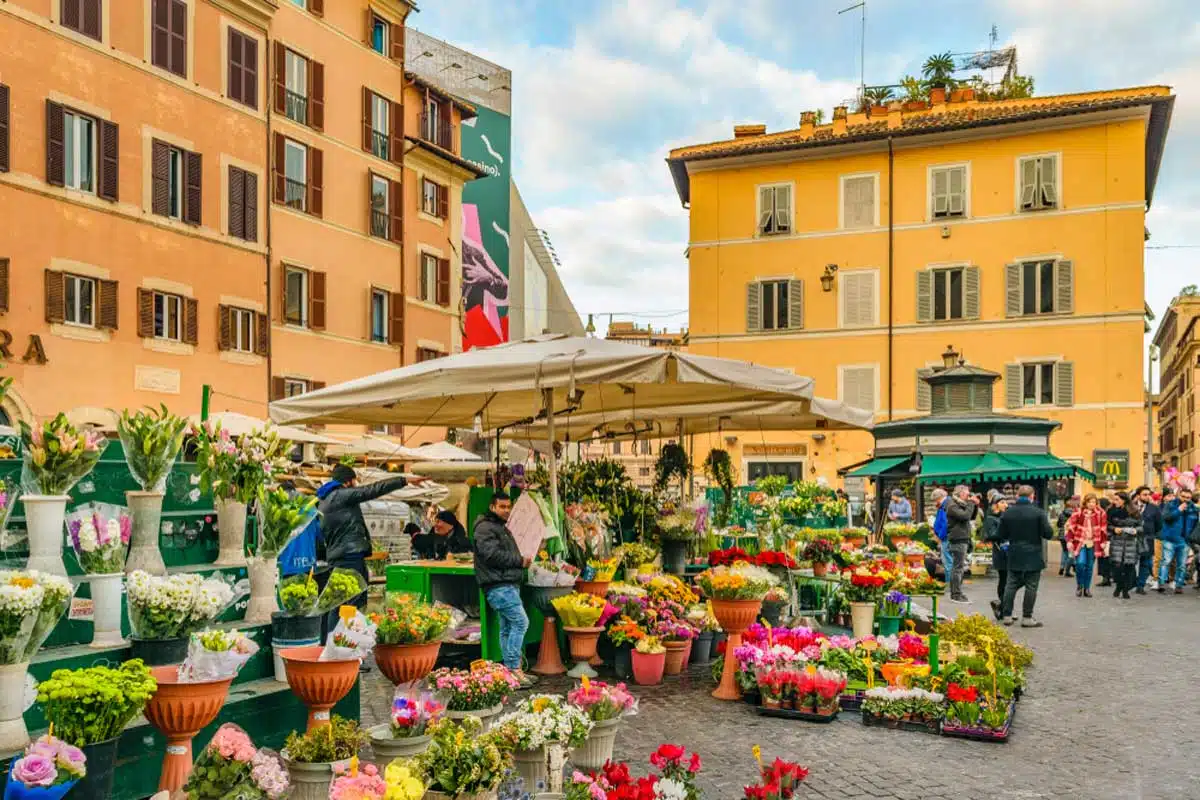
Walking the Campo de Fiori Market is an awesome experience. It’s not often you get to experience an authentic Italian marketplace in the heart of the city, so you should savour every moment.
This popular market has been bringing joy to the people of Rome every day since 1869 (except on Sundays). There’s no shortage of things to taste or buy, with various fresh produce, food stalls, and family-owned shops all offering something different.
Go Wine Tasting
You didn’t think I could write a guide to Rome without including wine, did you? Enjoy the good life by tasting the Frascati wines of Rome, also known as the ‘golden wine’ by locals.
Frascati wines have delicate flavours of blanched almonds and white peaches that make your taste buds tingle with joy.
Take a Rome by Vespa Tour
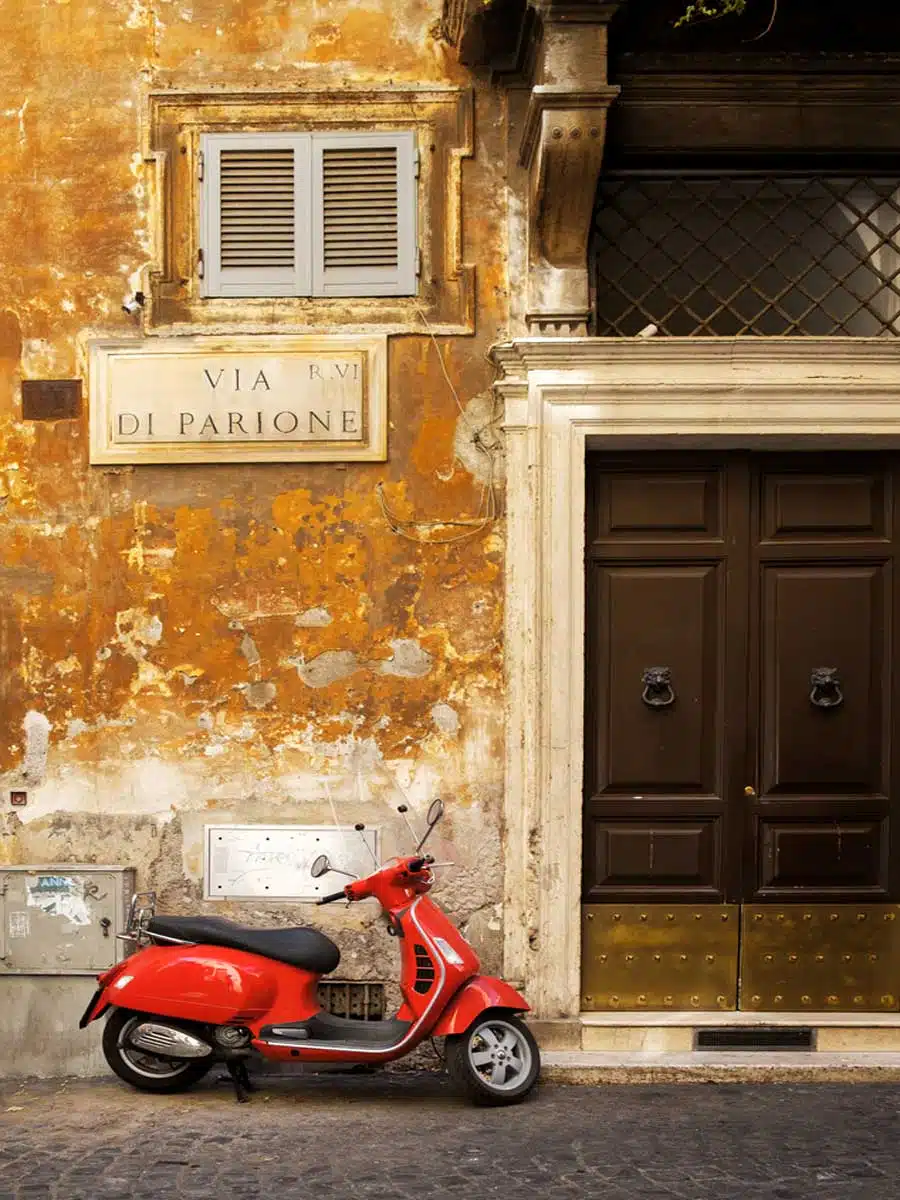
It’s a cliche, but for good reason – the best way to get around the city and see everything is on a Vespa. Rather than walking the busy streets of this magnificent city, you can zip around from sight to sight in style.
Do
Take a look at this fantastic Vespa tour of Rome.
Visit the Archaeological Ruins of Vicus Caprarius
One of the newest additions to Rome’s impressive catalogue of awesome historical museums is Vicus Caprarius – roughly translated from Latin as “City of Water”.
This archaeological ruin is a Roman apartment complex dating back to the first century AD. Here, you can see how wealthy residents of the Roman capital lived, using the same aqueduct that feeds the Trevi fountain for running water.
Stroll through the intricate maze of trenches, and tunnels, and close your eyes as you try and imagine what life might have been like 2000 years ago.
Top Tip
Bookings are made and confirmed via WhatsApp, just rock up, show the confirmation, and explore.
Practical Tips for Your Rome Trip
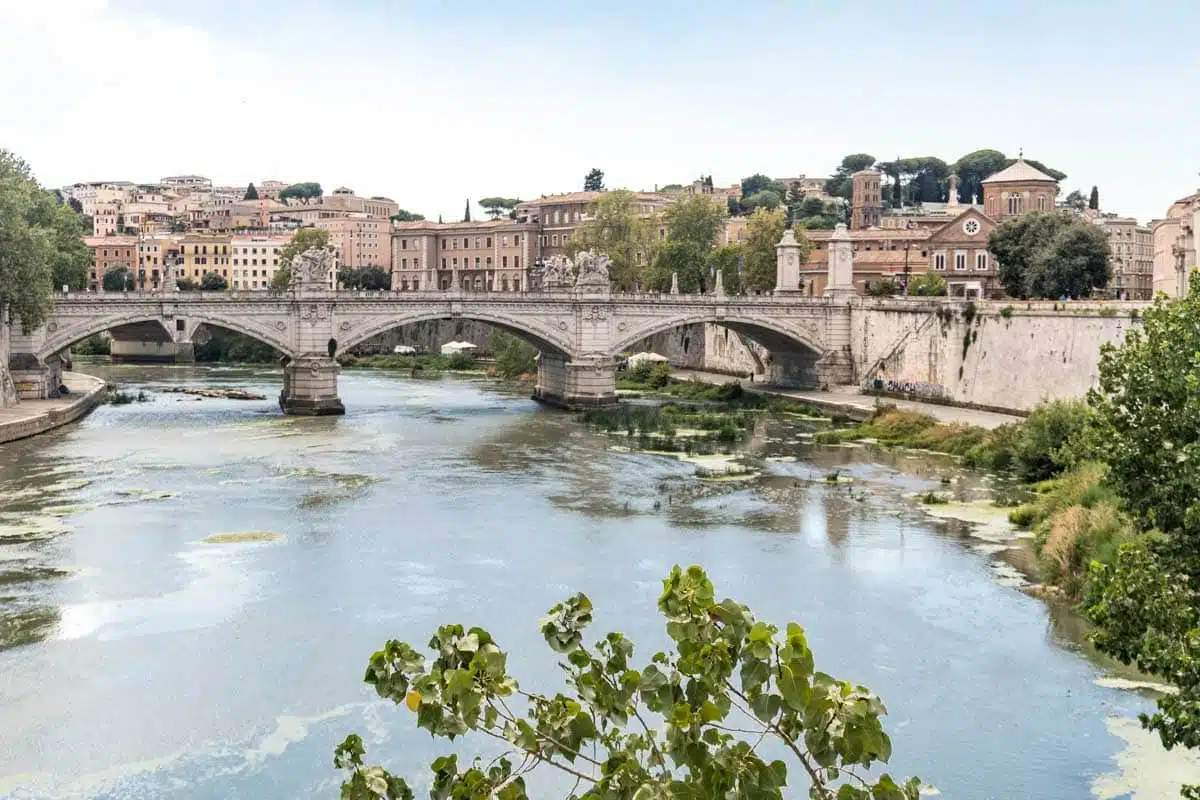
How Long to Visit in Rome?
You should visit Rome for at least three to four days – as this gives you ample time to explore the city’s top sights at a relatively leisurely pace. Got a week? Great – spend five days exploring the city and add in a couple of day trips.
Best Time to Visit Rome?
The best time to visit Rome is during the shoulder months of May, June, September and October. These months offer lovely weather, reasonable accommodation costs and fewer crowds than summer.
Where Should I Stay in Rome?
Here are some great recommendations for all budgets when visiting Rome.
Otivm Hotel (Mid-Range)
Stay at Otium Hotel for affordable accommodation in the heart of the city. With rooftop city views and a continental breakfast to start your day, you can expect a comfortable stay.
Hungry Lions Apartment
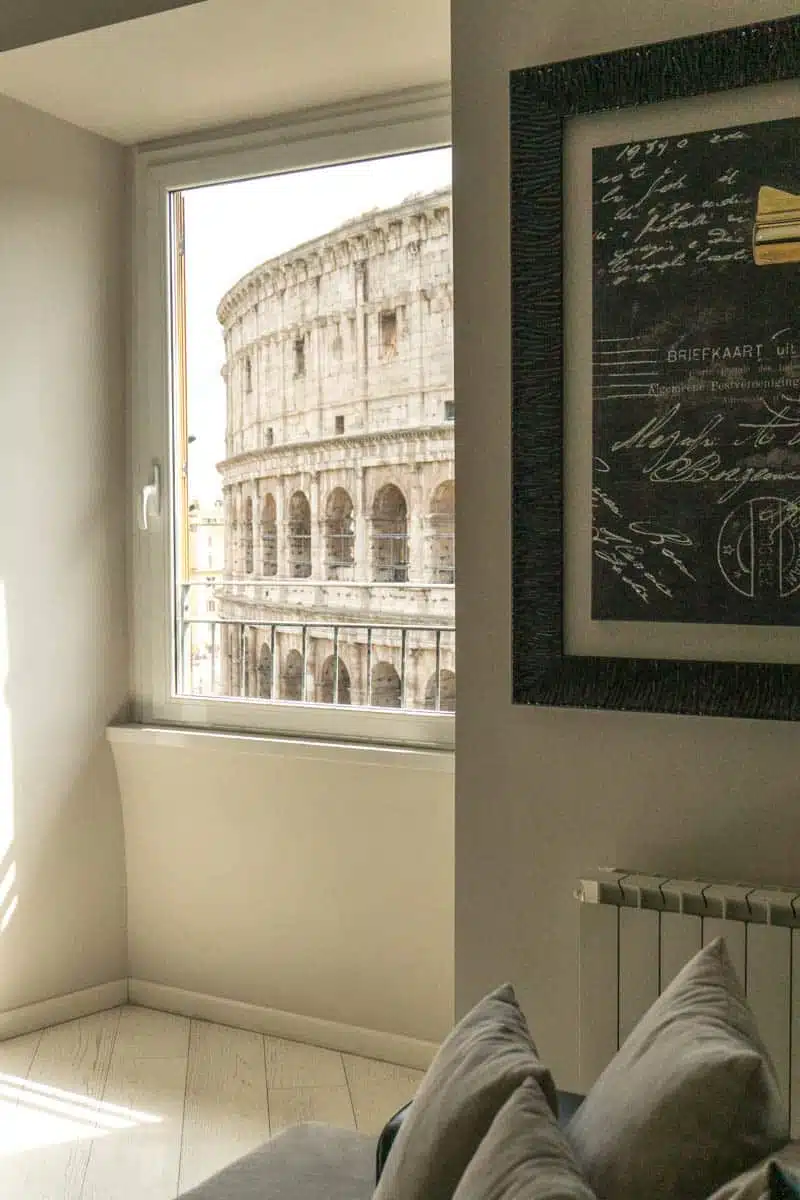
If you’re looking for a jaw-dropping place to stay, this beautiful apartment has views covered. Quite literally. Open the windows and you will quite literally find yourself within arm’s reach of the Colosseum.
Stylish and modern, this apartment comfortably sleeps two – and the huge fluffy bed with views will make it oh-so-difficult to peel yourself out of bed in the morning.
Map
Read More Rome Guides
- See the Best of Rome with this One Day Itinerary
- How to Spend Three Days in Rome
- Famous Landmarks in Rome
- Brilliant Day Trips from Rome
- Exploring Rome’s Catacombs
- Where to Stay in Rome: Best Areas for Your Trip
Love This? Save and Share on Pinterest
